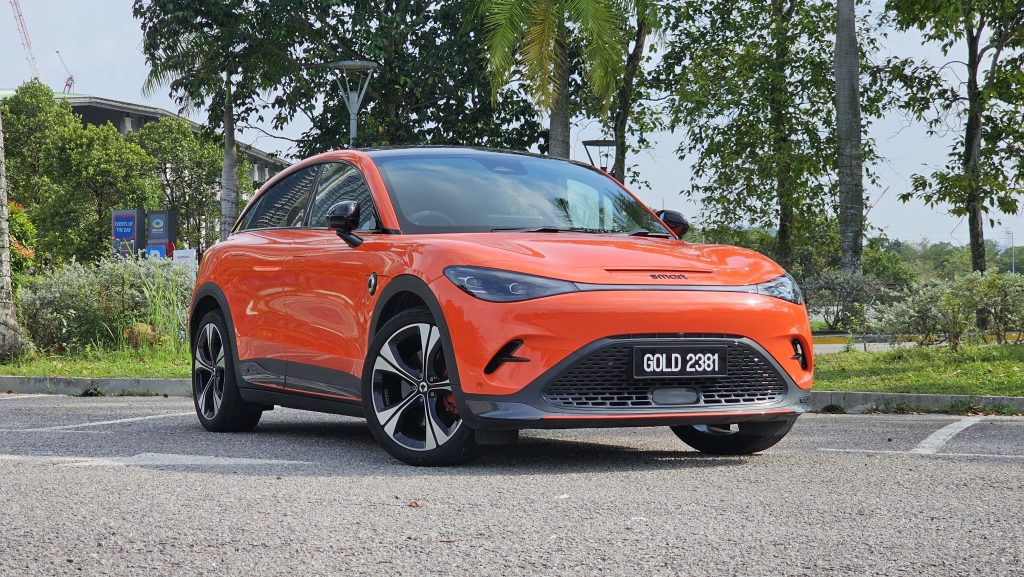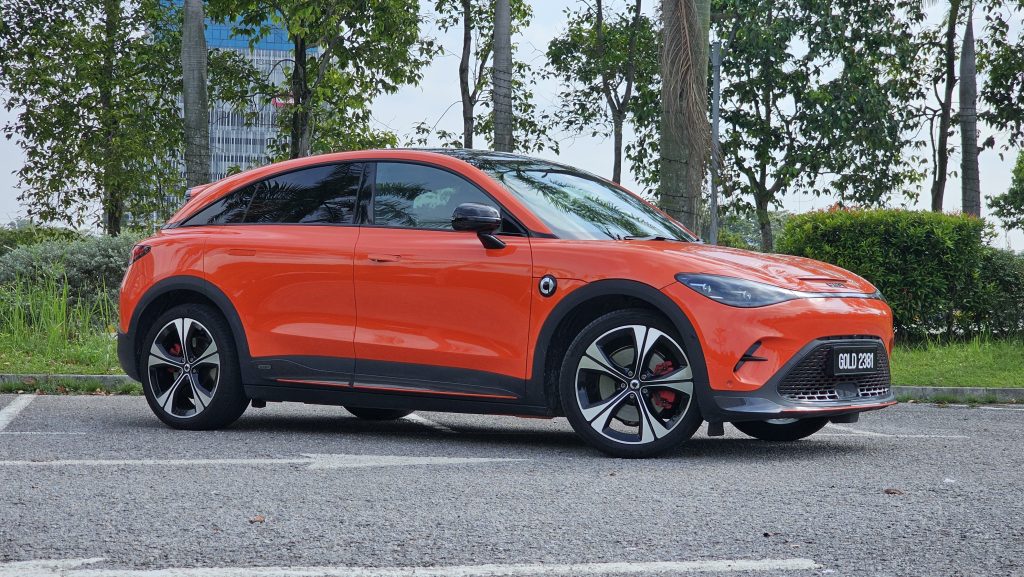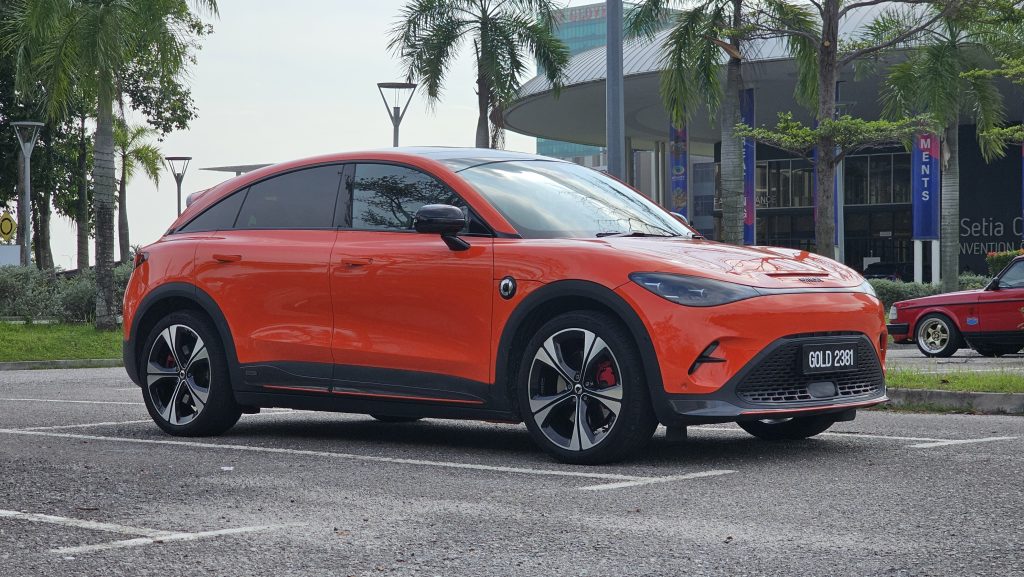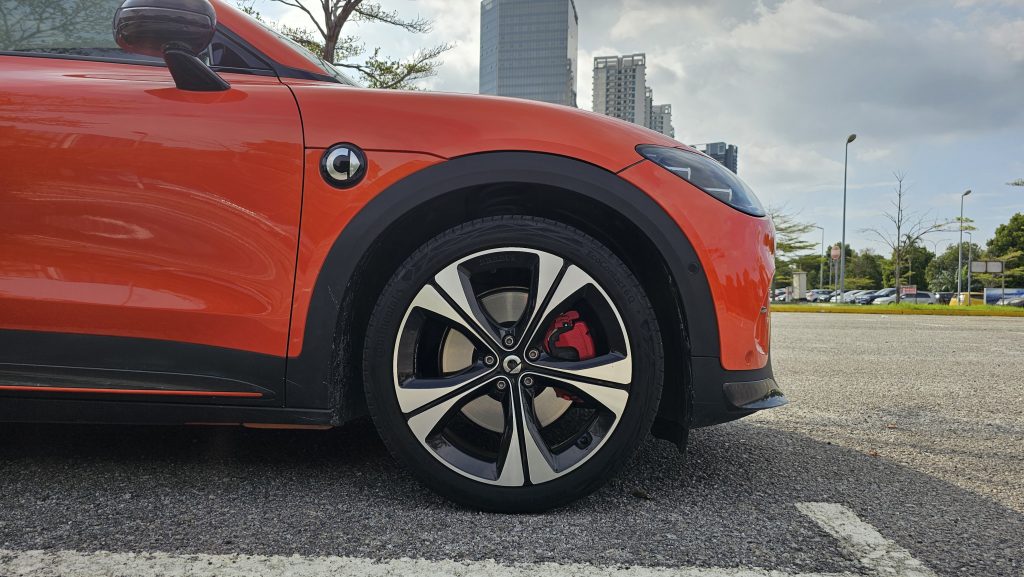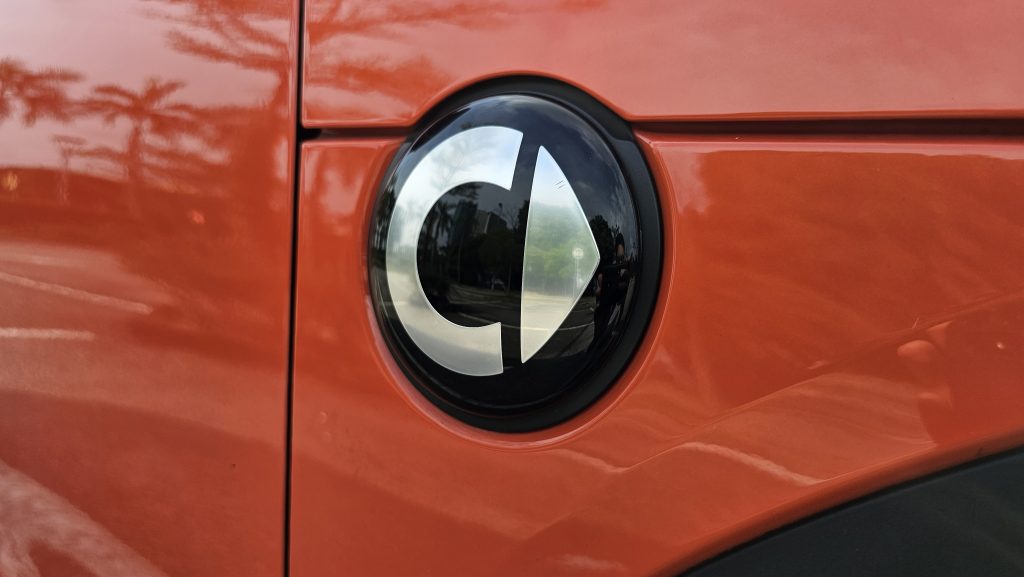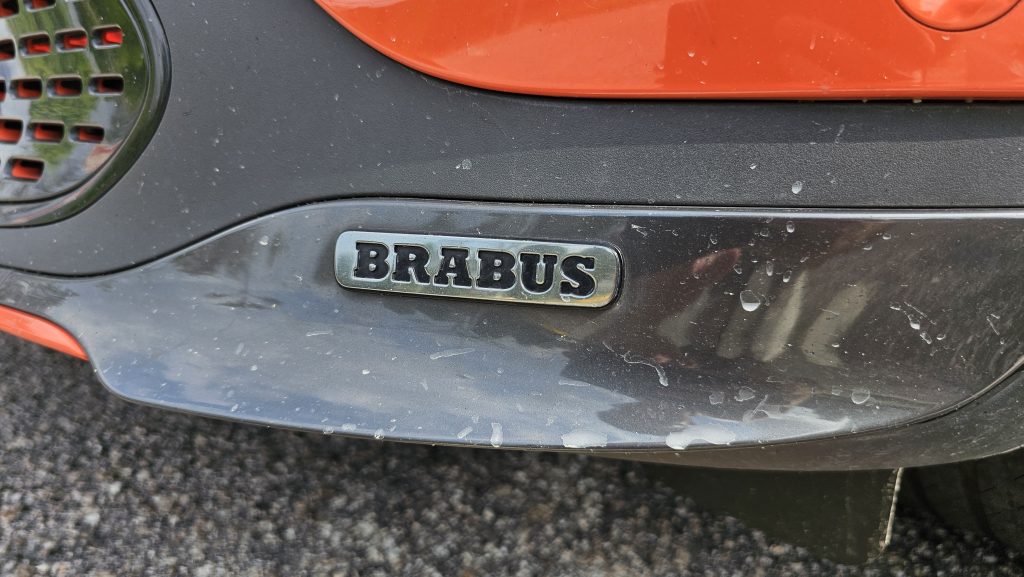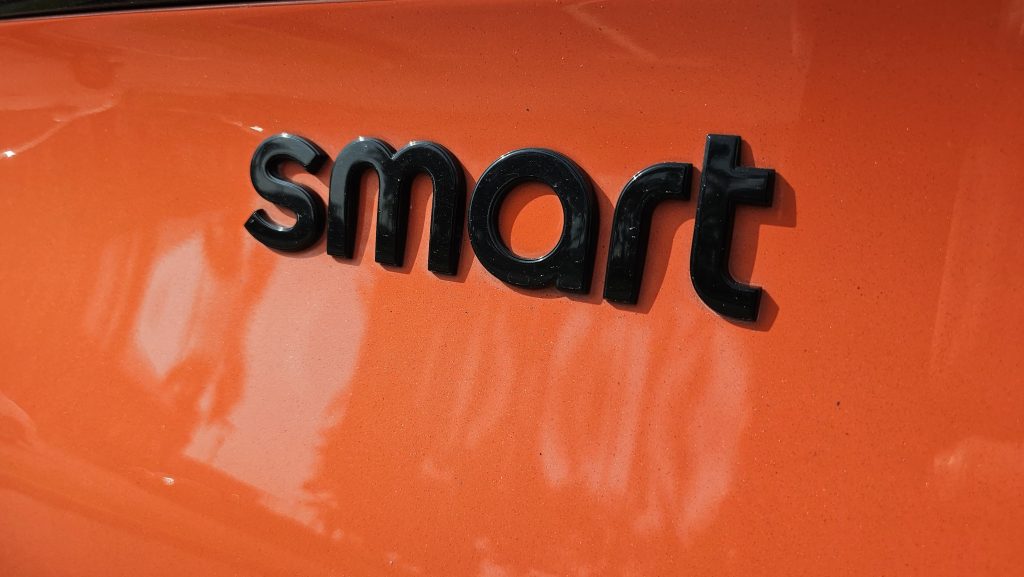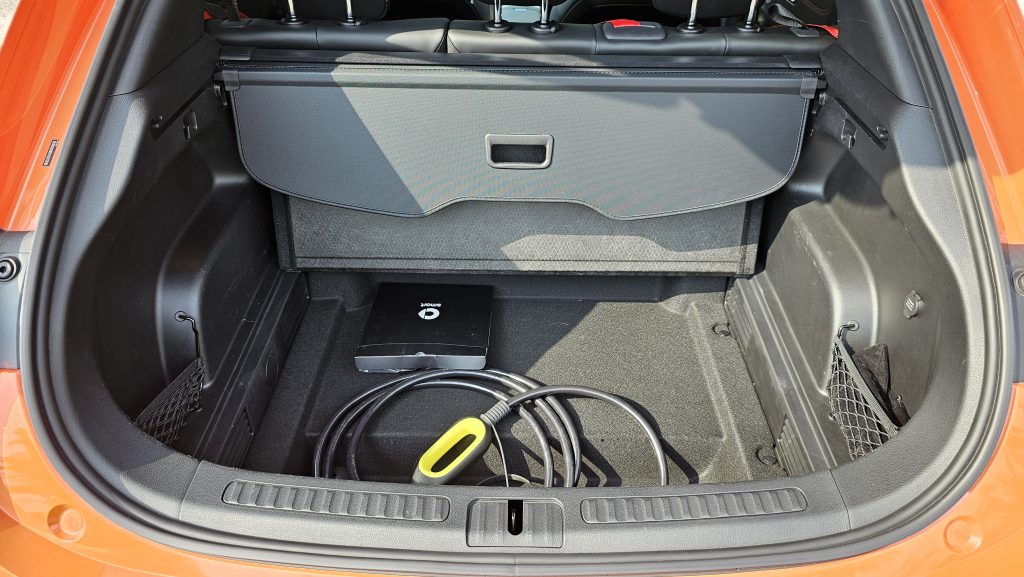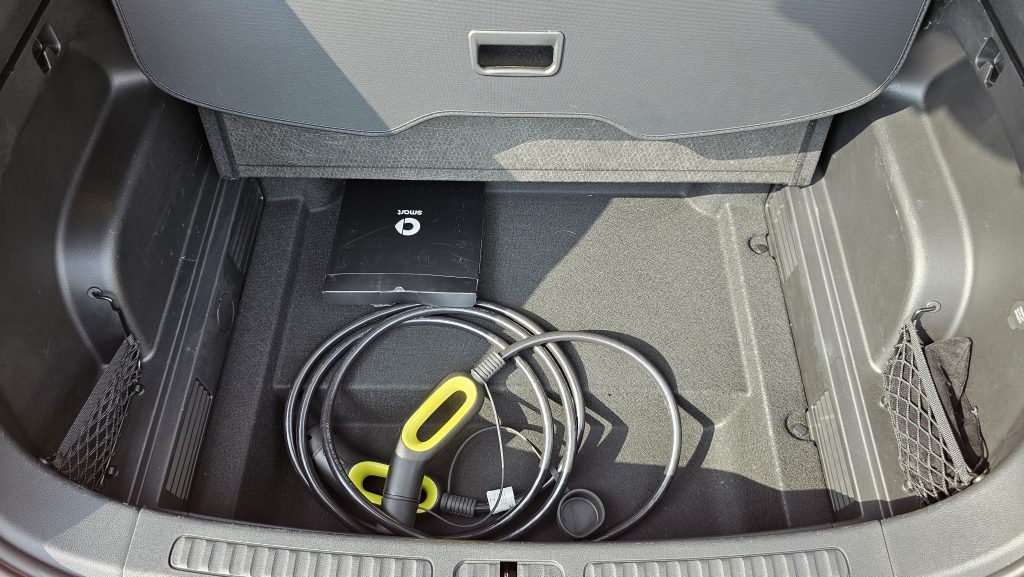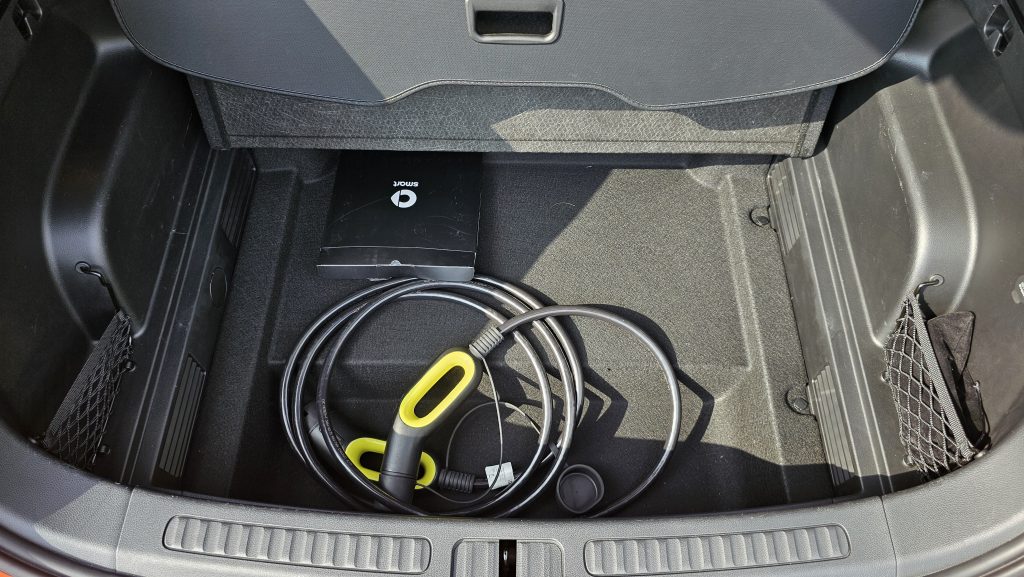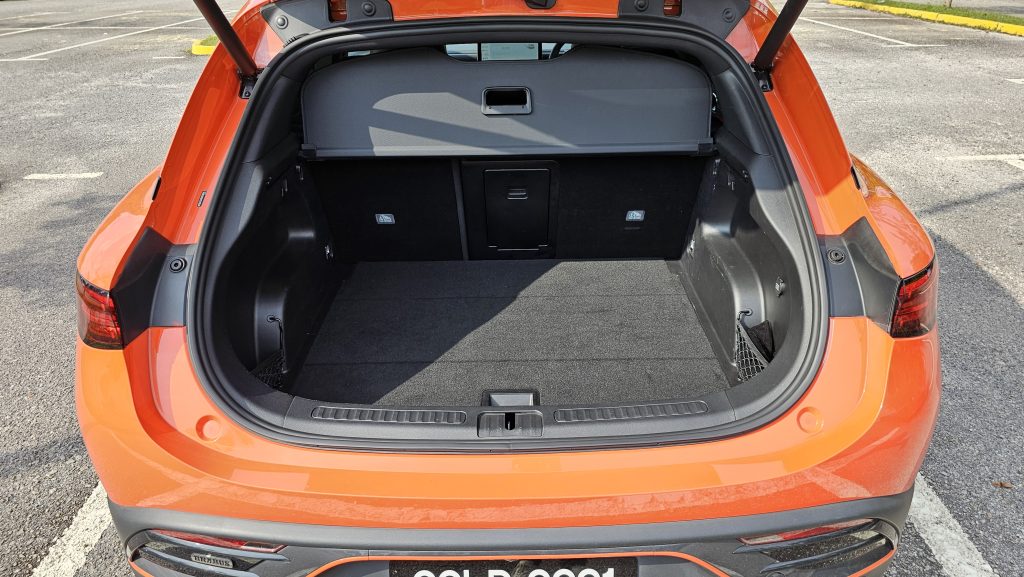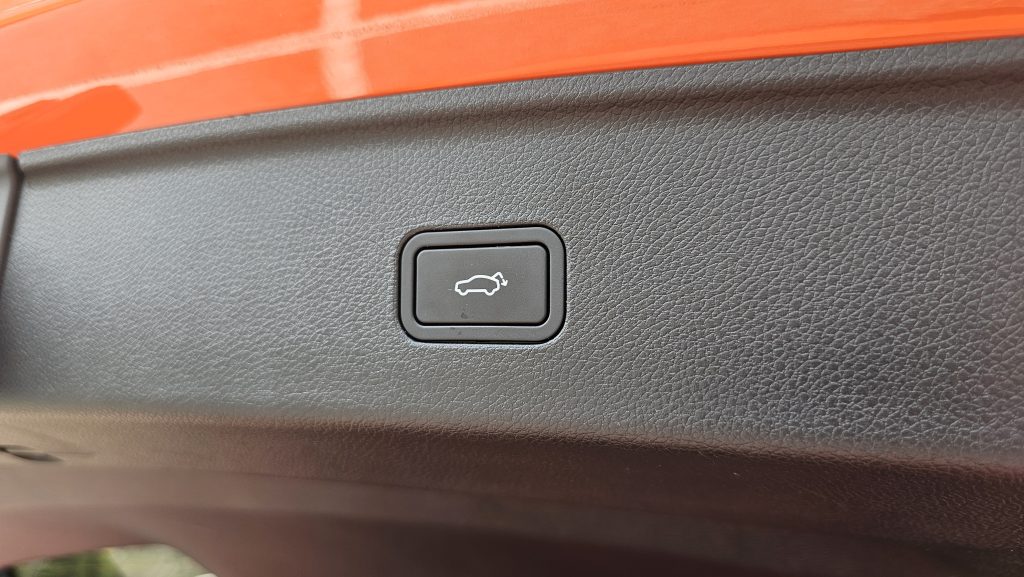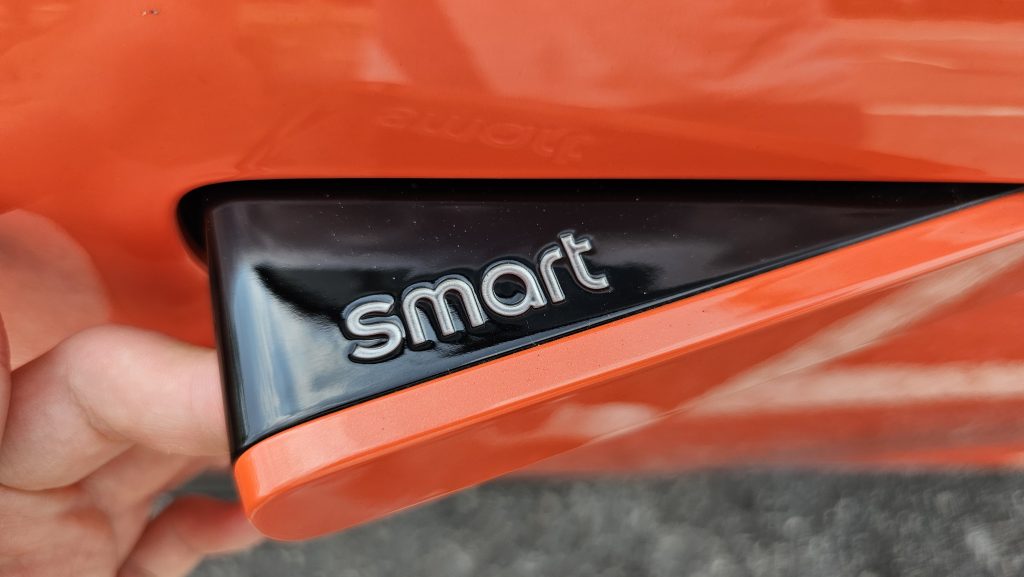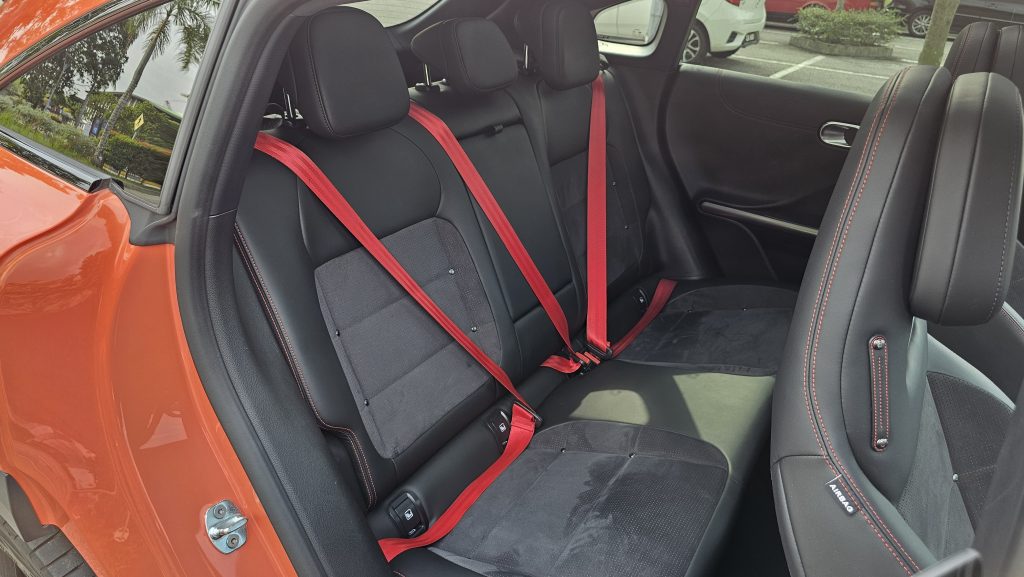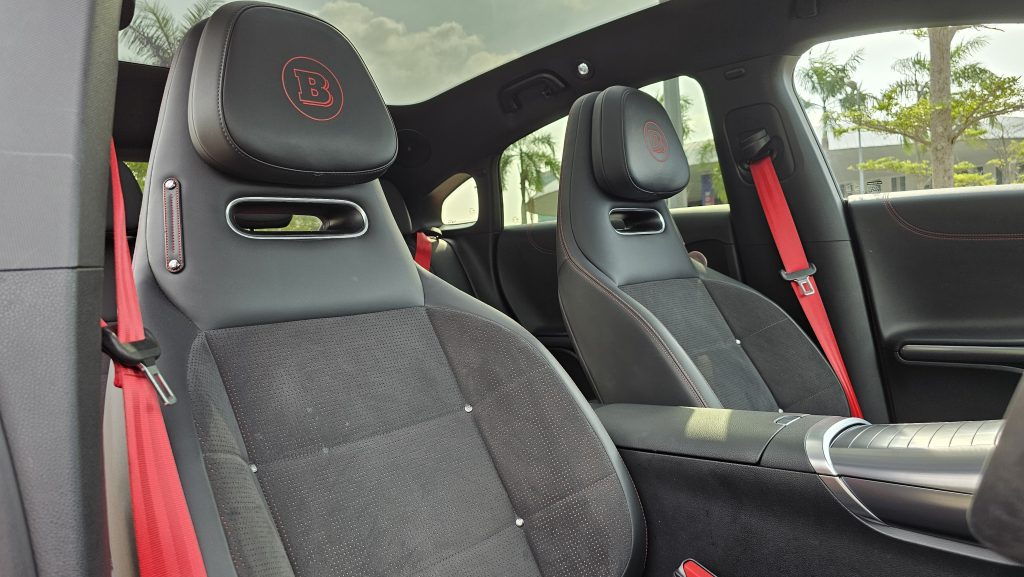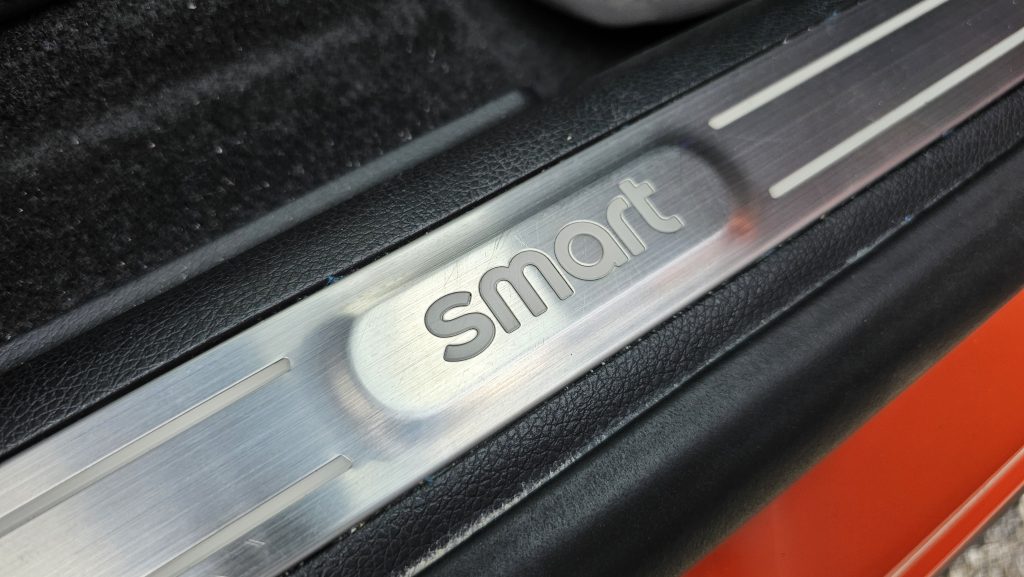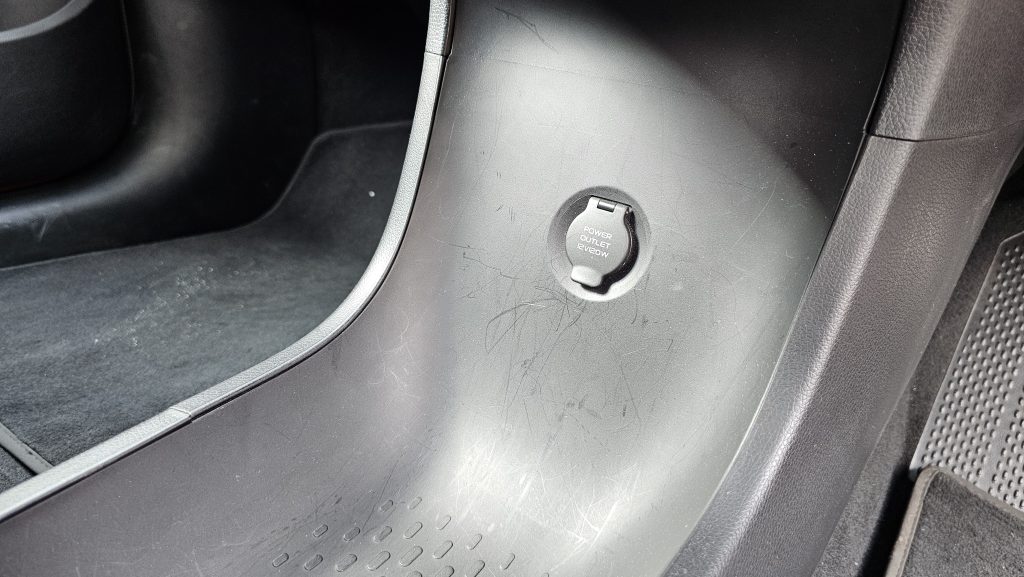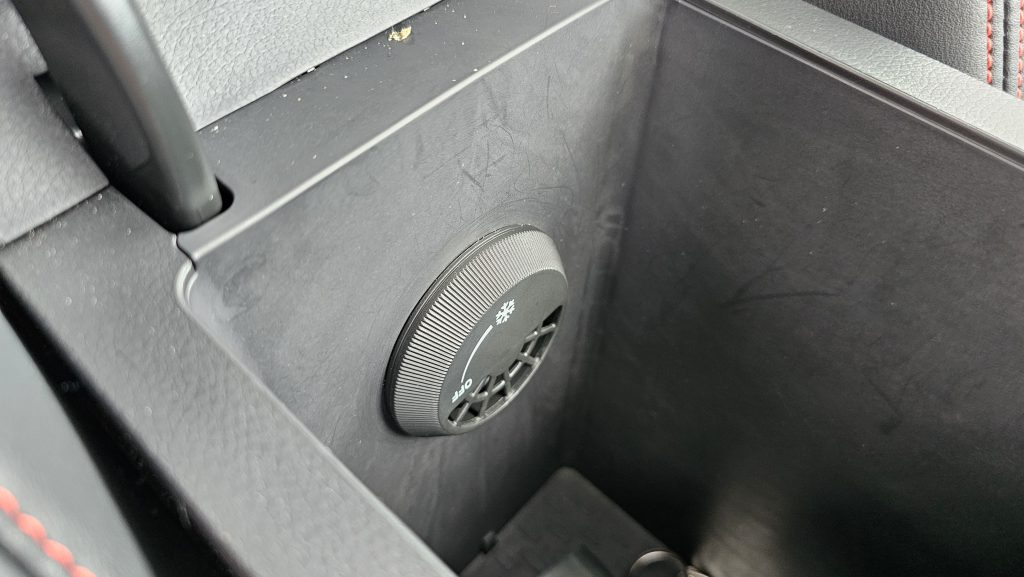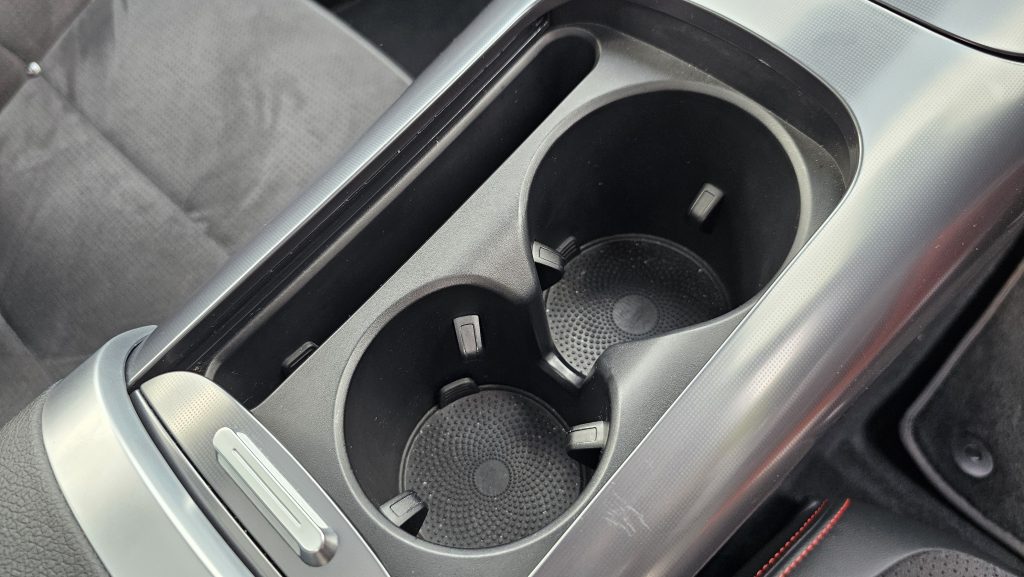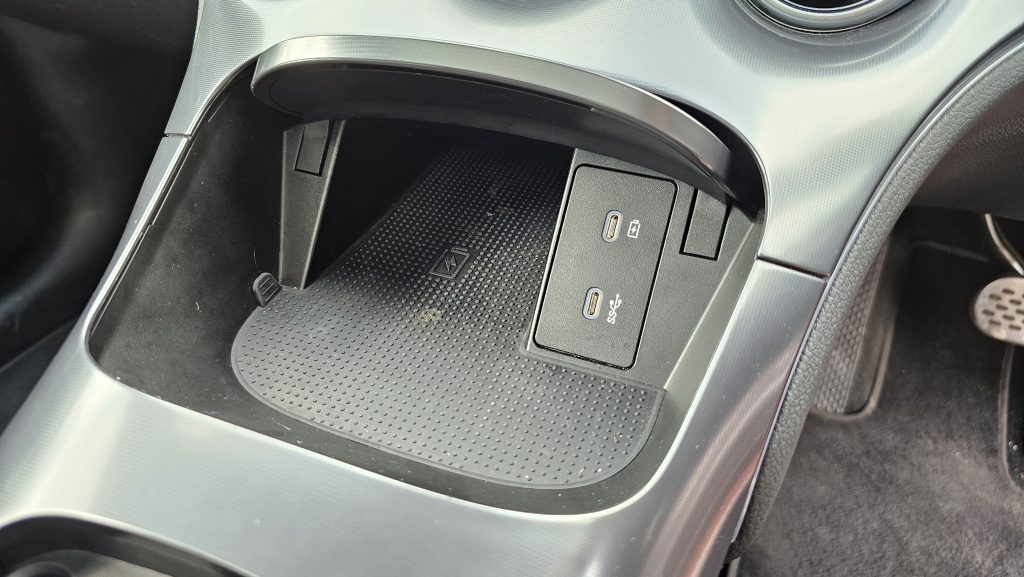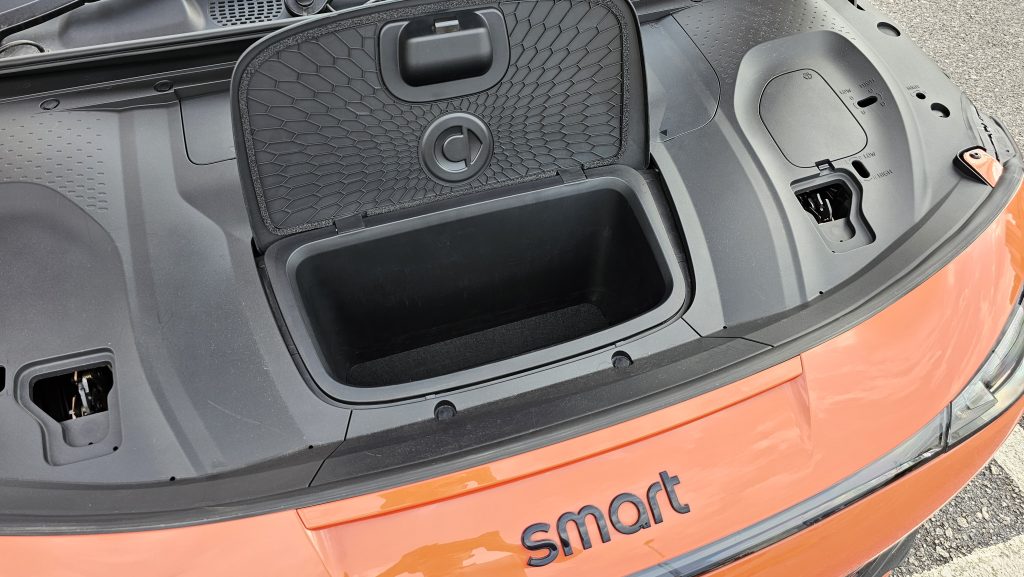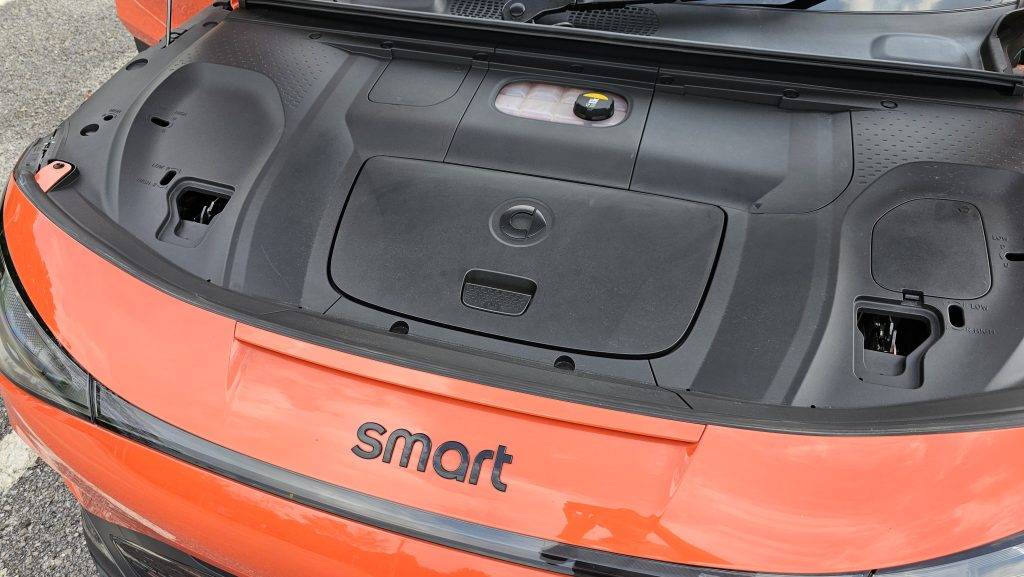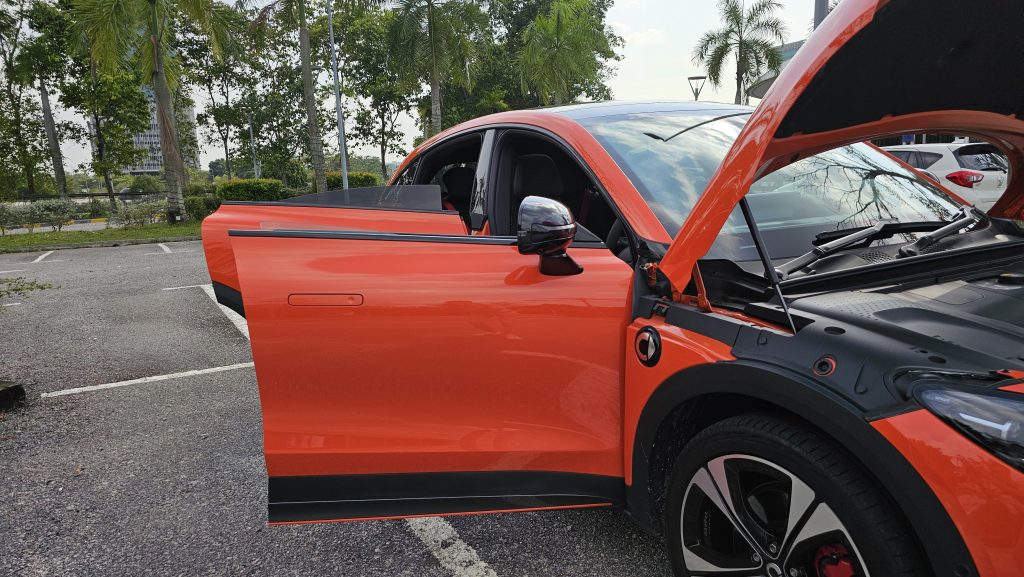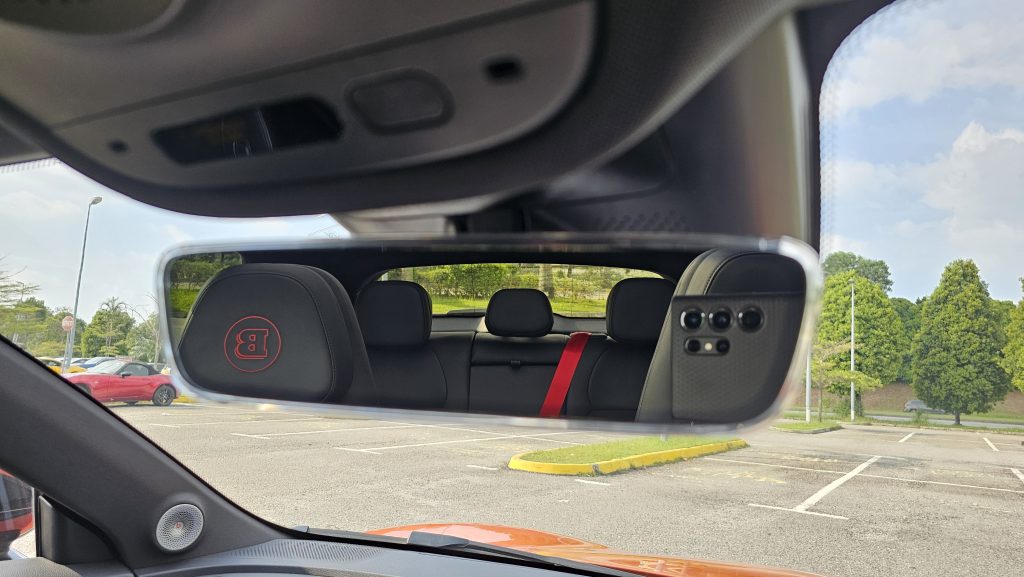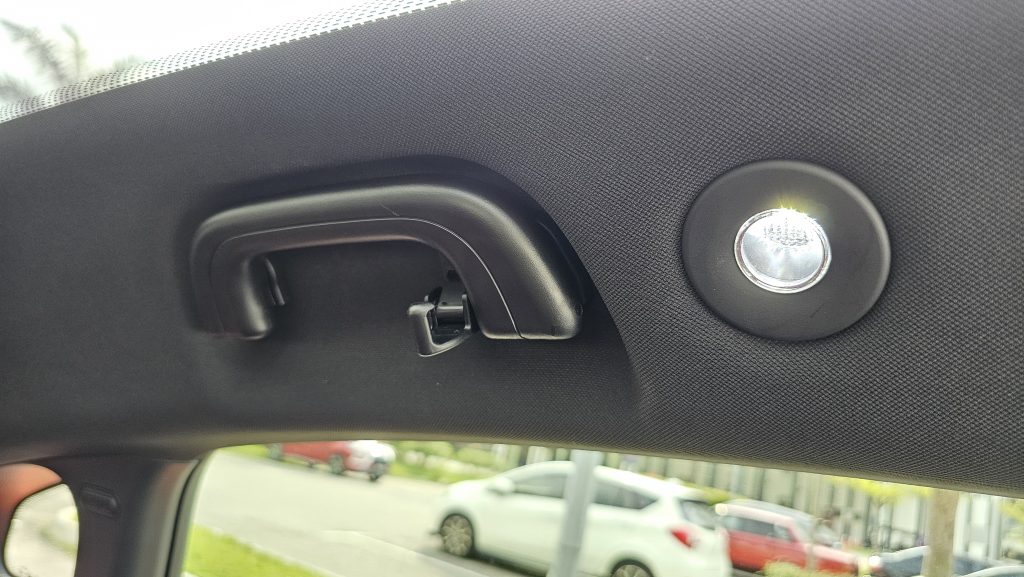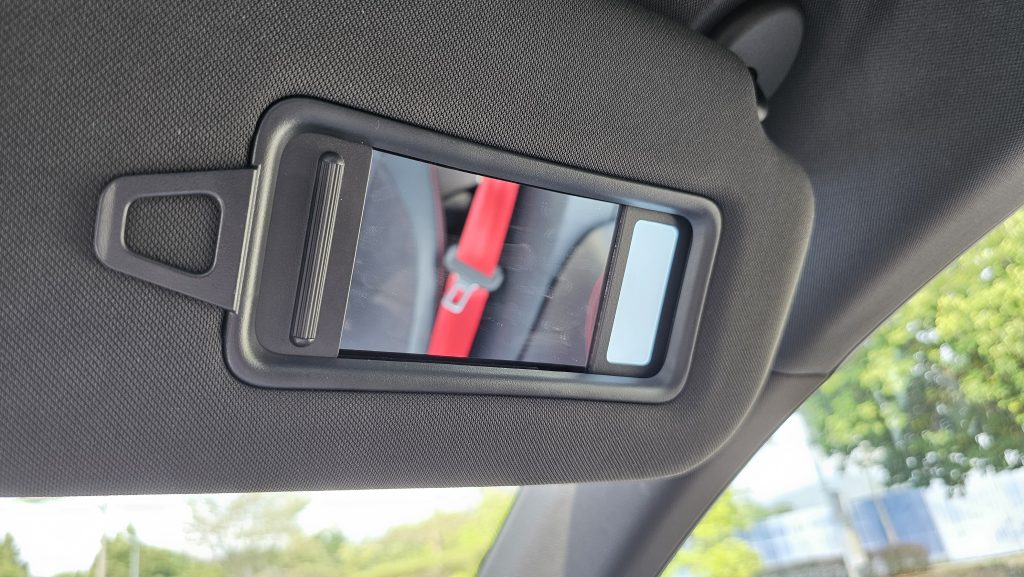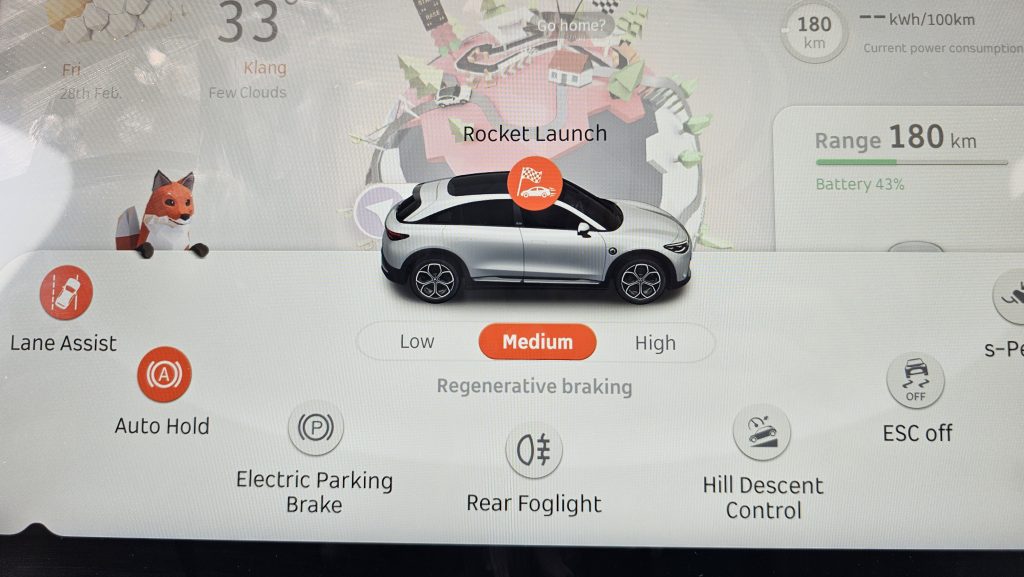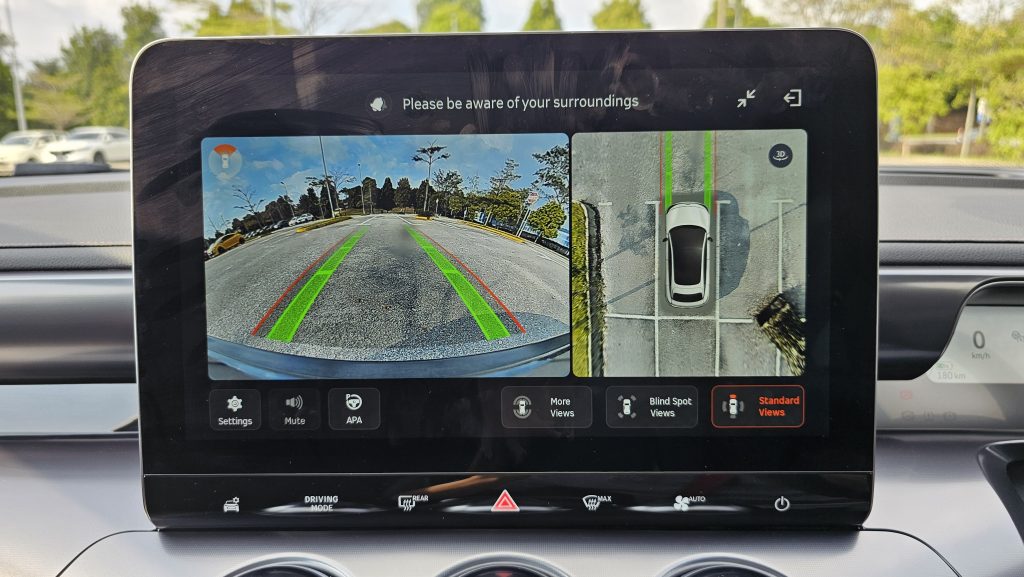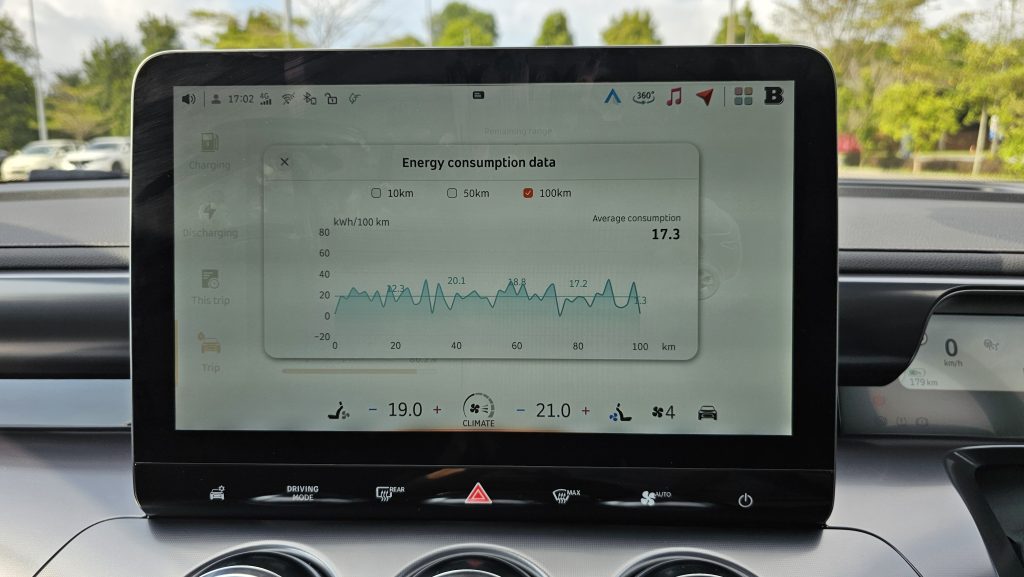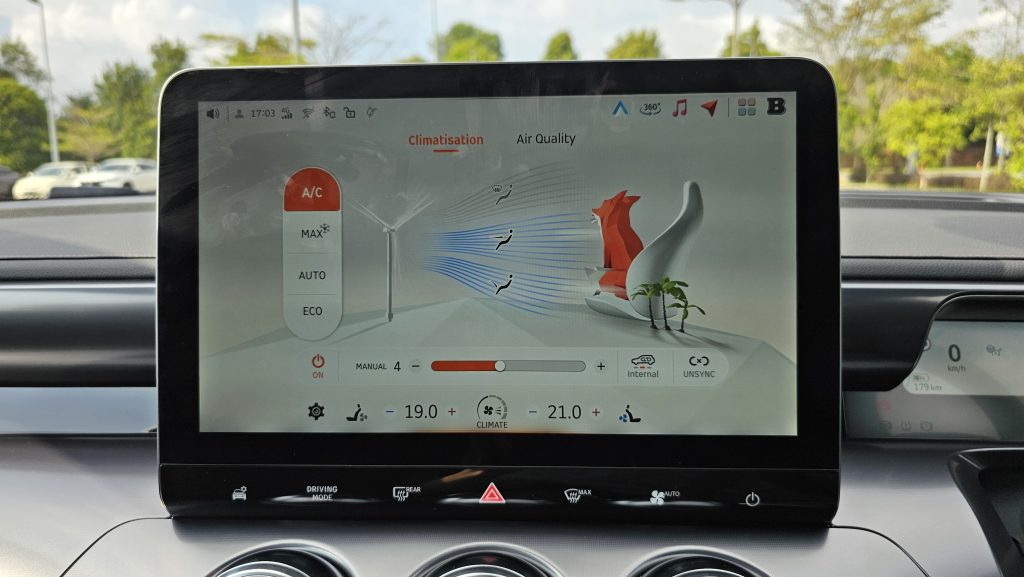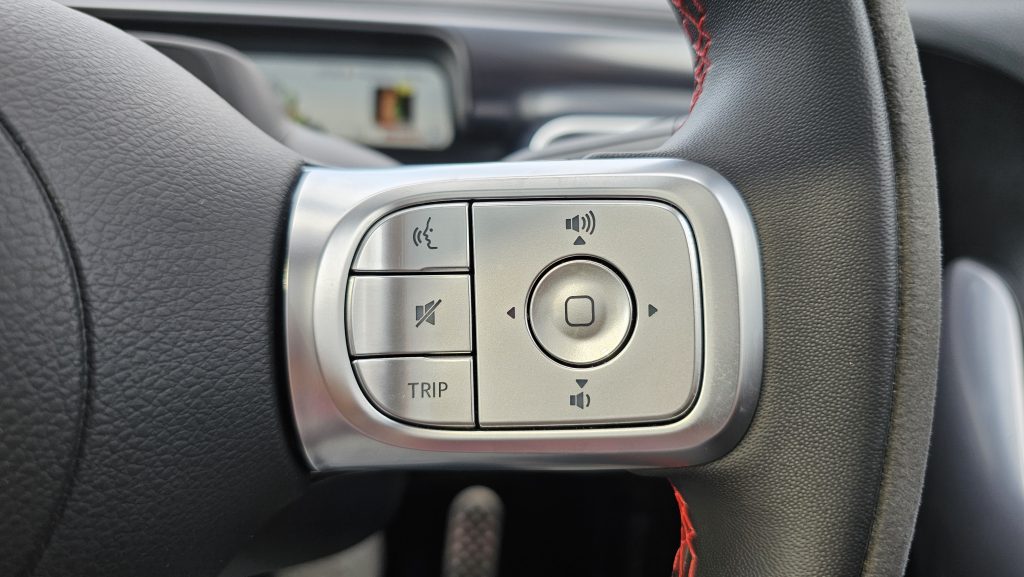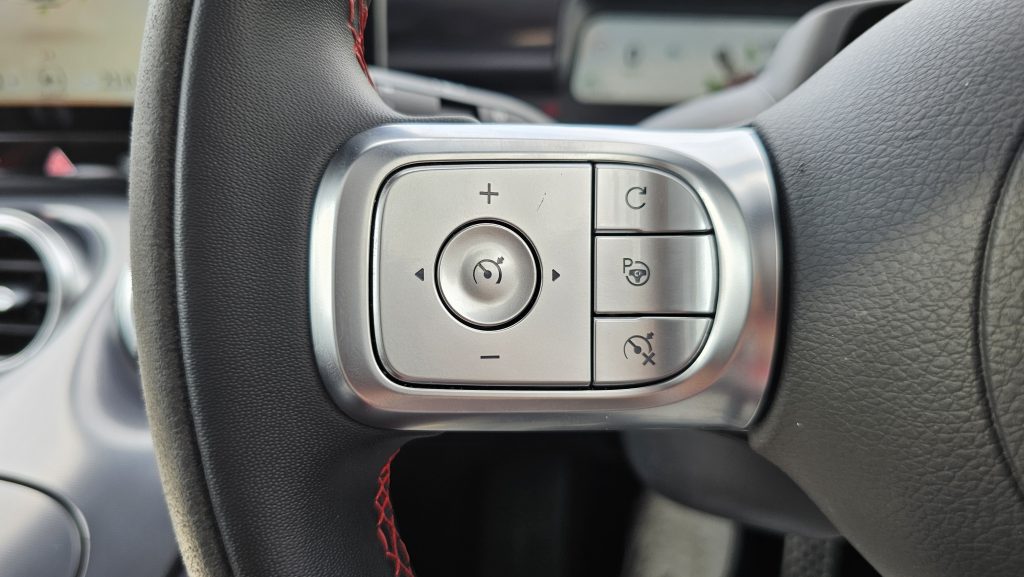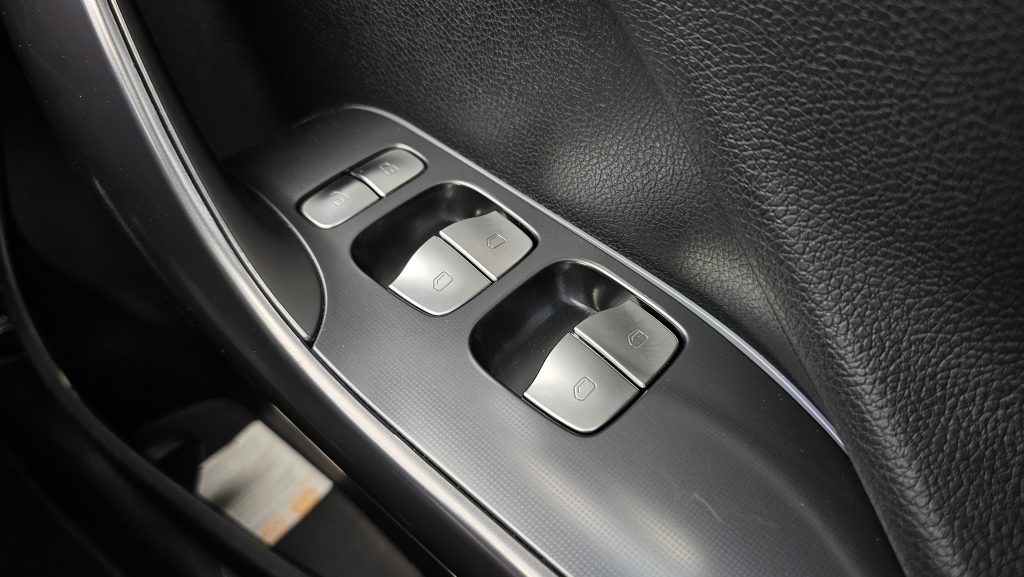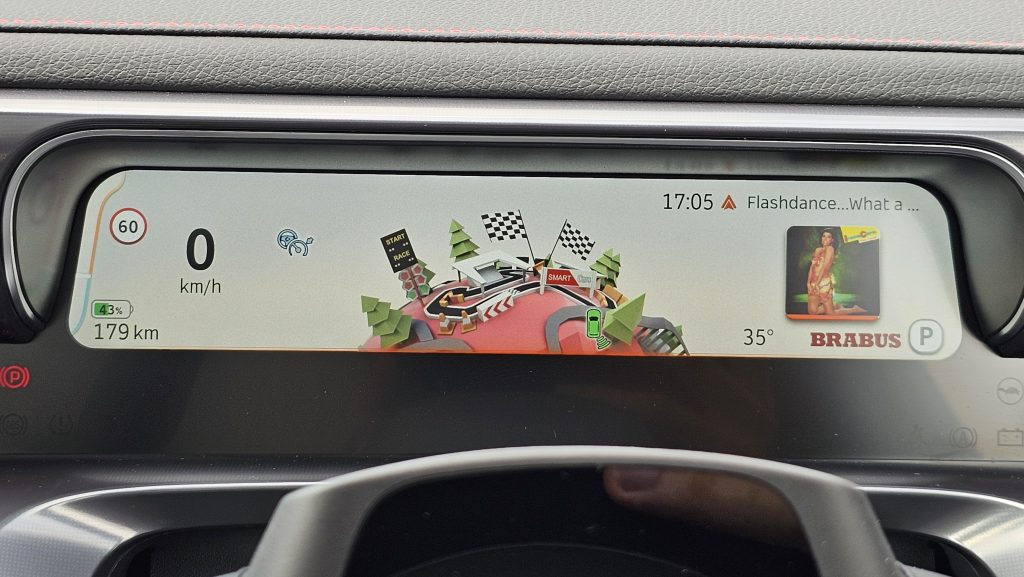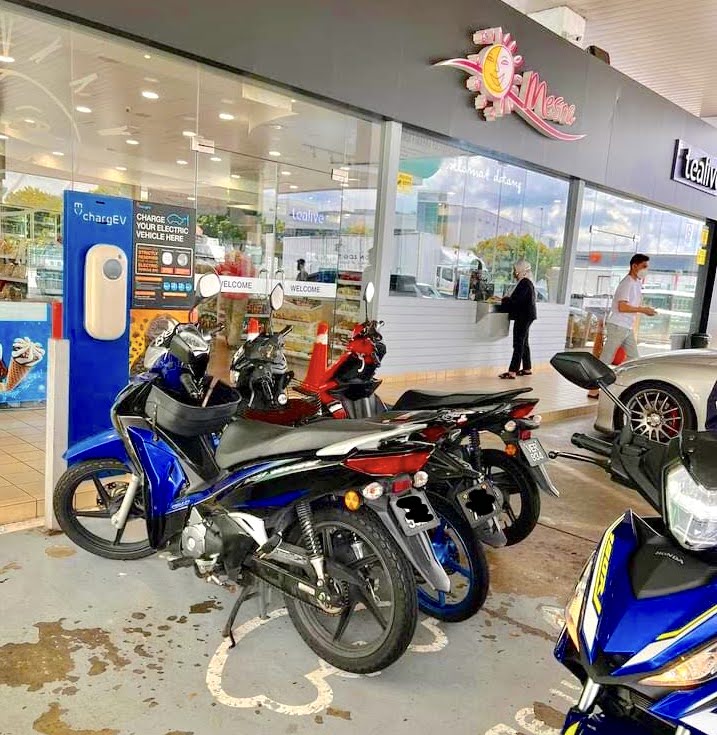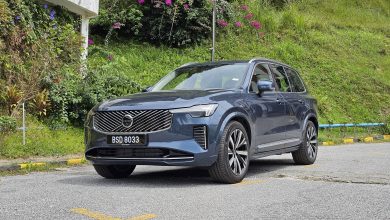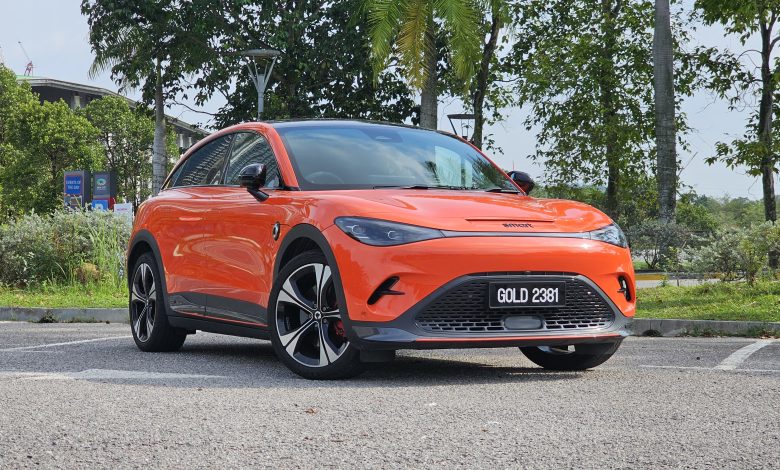
The overwhelming power of this #3 BRABUS is certainly its USP, but is it enough to outweigh its liveability niggles?
A little while ago, Automacha had the smart #3 on test, and frankly, the overall verdict wasn’t exactly glowing… The variant reviewed back then, however, was admittedly the base-spec Pro trim, and having previously had an overwhelmingly positive experience with the #1 BRABUS, this writer therefore wondered if the same sporty spec would change his mind on this sleeker smart.
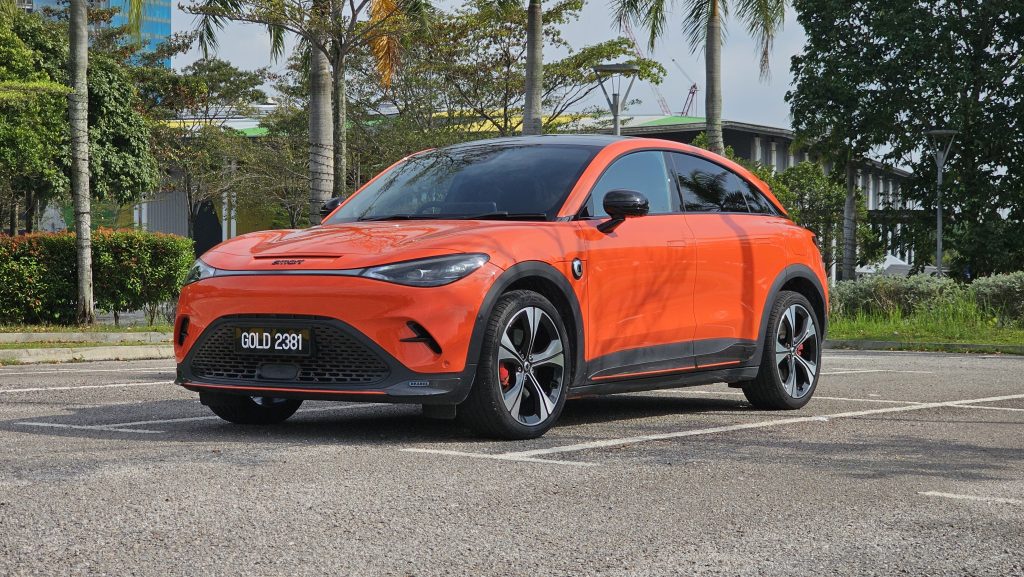
So now, having since driven the #3 BRABUS around for a few days recently, the simple question worth asking here is whether adding more power solved the many issues this writer had with the base Pro variant? Well, yes… and no.
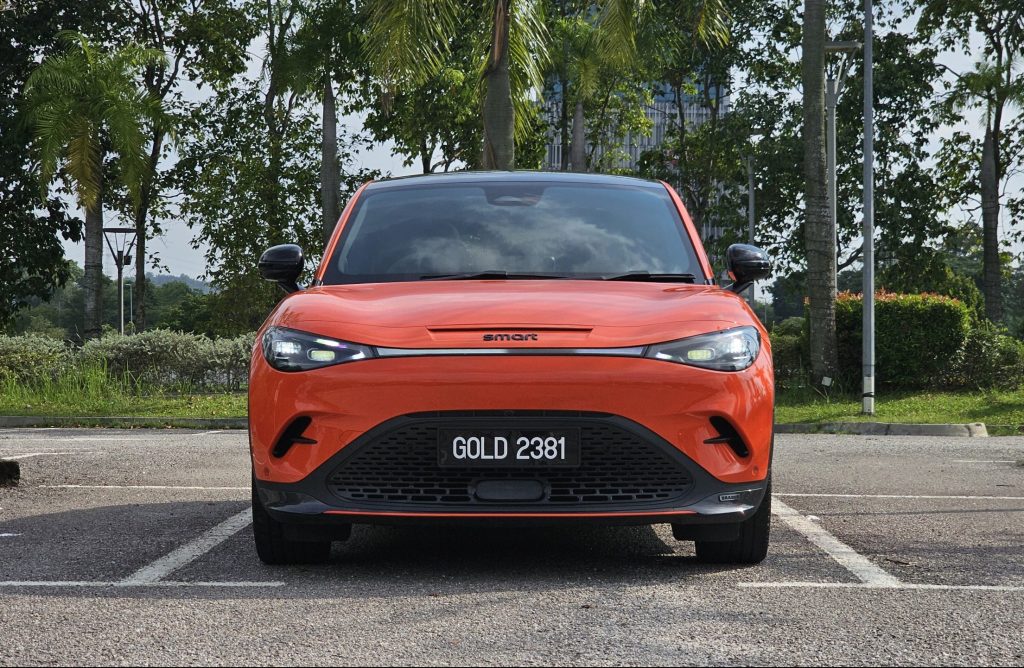
Starting on the “yes” front first on how power solves the #3’s issues, it simply stems from how power is really just the overwhelming characteristic of the BRABUS variant #3!
Really, step on the go pedal in this sporty smart, and from just the way it takes off, one really wouldn’t (and frankly couldn’t) care about anything else other than how to get it to stop… and once the adrenaline dies down, when one could do it again.
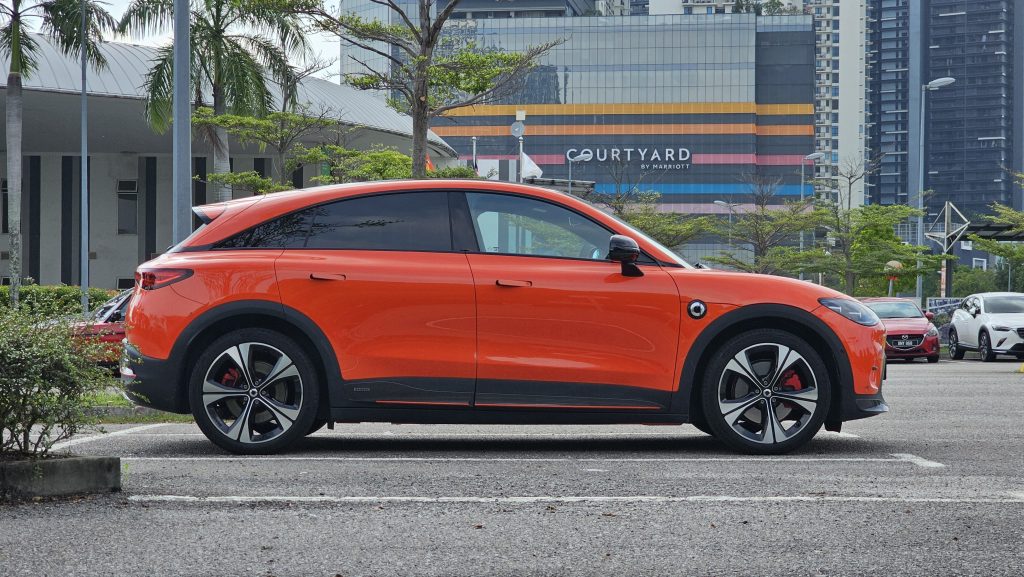
In BRABUS mode especially, the way this #3 blasts down the road is as if it is being shot out of a cannon. And while there are of course a few other EVs that can get close to this #3’s claimed 3.7-second 0-100 km/h time, none of them (even those from actually sporty brands) really even comes close to how absolutely brutal this thing manages to launch off the line.
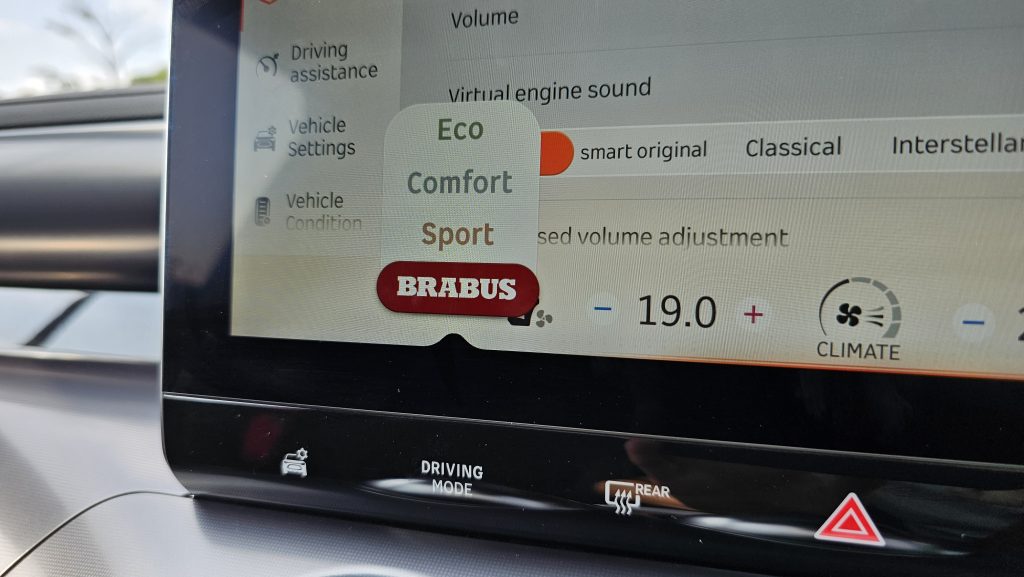
What’s more is that this BRABUS is far from just a 0-100 km/h roller coaster experience also, as those who manage to keep their foot continually buried in its carpet will soon realise that its dual motors are more than capable of pulling this EV all the way to an official top speed of 180 km/h. And for what it’s worth too, the #3 allegedly remained so stable and solid as it rockets to its V-Max that one possibly might only have realised that its speedo was pegged when the digits of the heads-up display neglected to go any higher than 185 km/h.
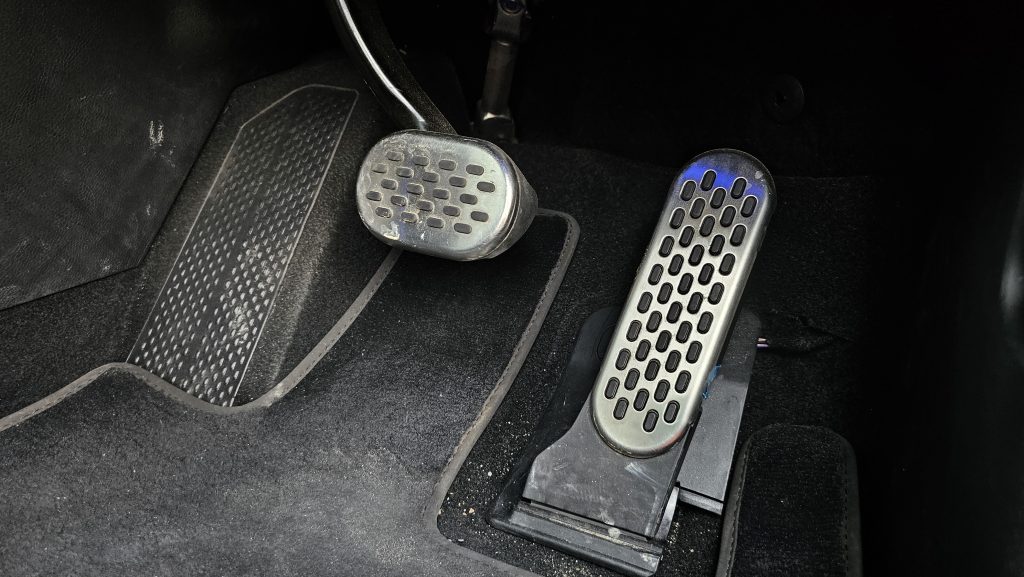
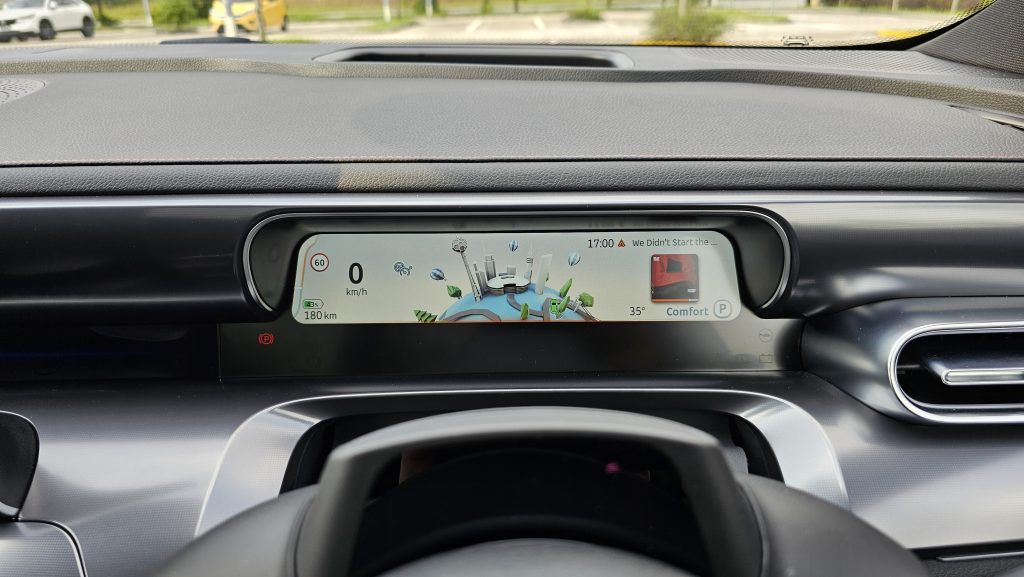
Unfortunately however, it would be remissed not to mention that this sense of rock-solid stability really only applies when this smart is bombing along the straights. This is because things do begin to falter somewhat when attempting to round a corner, especially at BRABUS speeds…
While this writer still champions the SEA architecture that underpins this #3 as being one of the most accomplished EV platforms when it comes to driving dynamics (and that the smarts are the best handling out of the bunch that rides on this platform), it nevertheless still fails somewhat to really defy the laws of physics when it comes to making a very heavy car go around a corner at very high speeds.
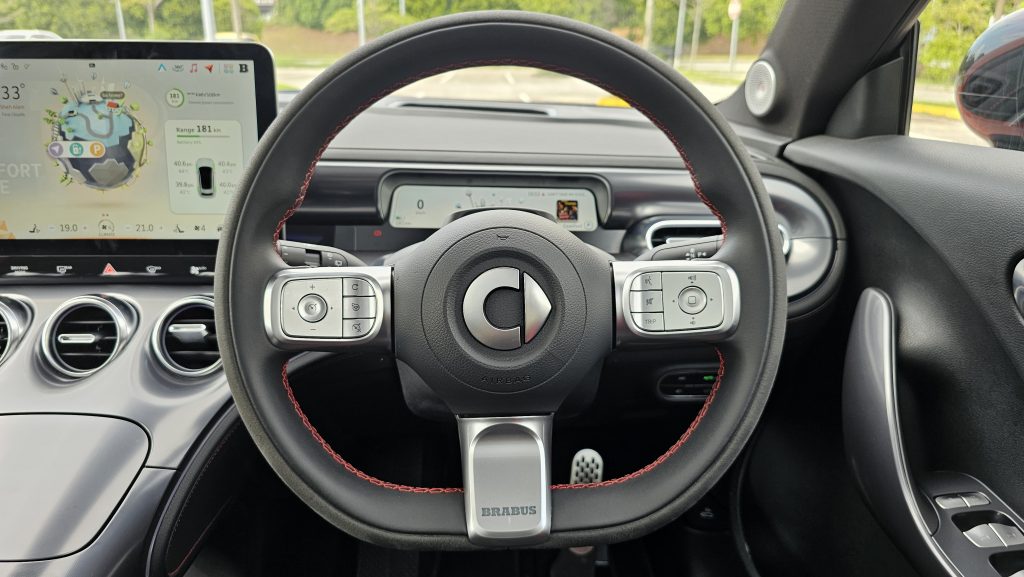
Despite its steering being fantastically direct and body roll being kept well under control, every single gram of this #3’s 2.3-tonne kerb weight is, however, still made very evident when this smart enters a bend at speed. Said heft is frankly to be felt under braking too, as its genuinely rather good stoppers still somehow feel a tad overwhelmed when they are demanded to scrub a large amount of speed in a short span of space.
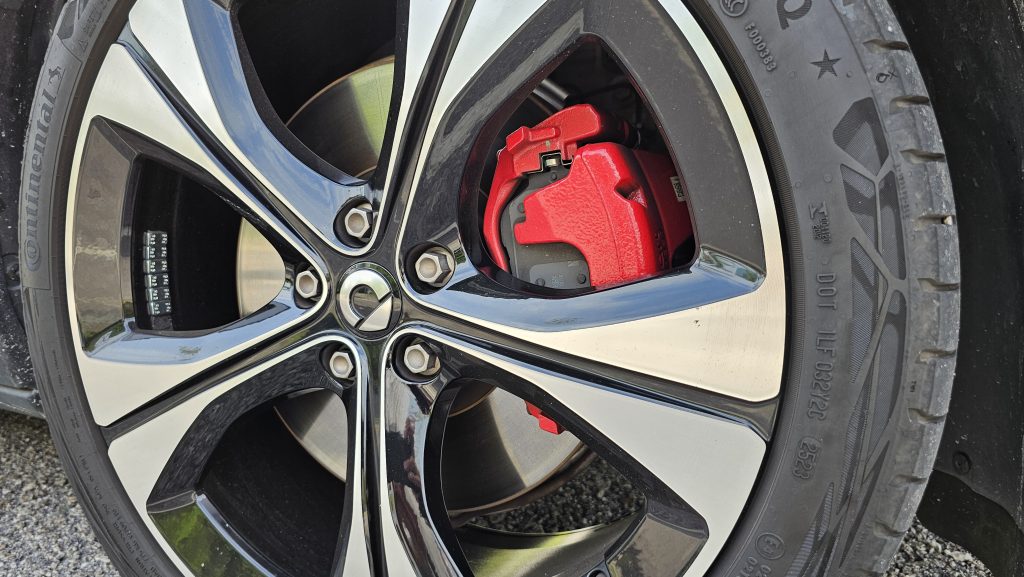
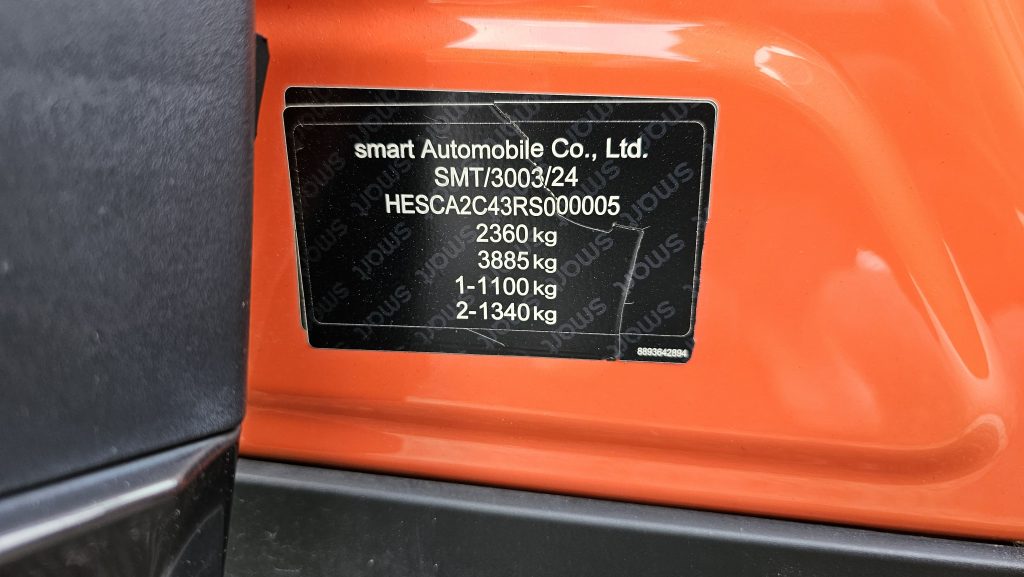
Now understandably here, many who are reading this might think that they would never, ever push the #3 to such a degree. Though perhaps testament to how easy to drive and how absolutely addictive the power of the BRABUS is, in this writer’s experience at least, even the meekest and most sensible driver will suddenly think they are Michael Schumacher when in the hot seat of this smart, and hence these on-the-ragged-edge driving dynamic critiques do require some pointing out.
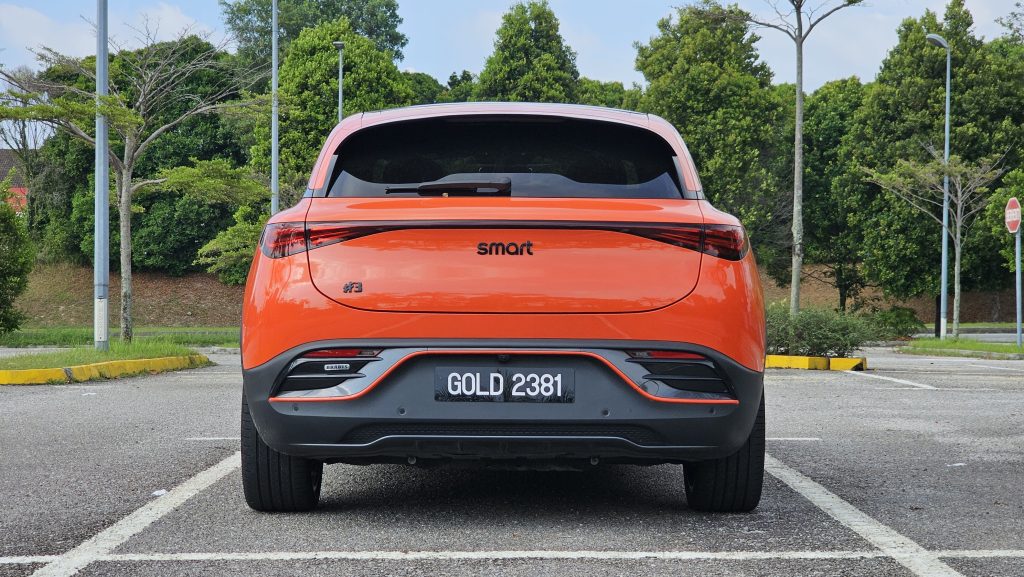
Also, just as an aside too, who thought it was a good idea to put eco-focused Continentals on a performance EV? And this is especially concerning when said Contis are actually inordinately loud even at moderate highway speeds, which does spoil the EV serenity somewhat in this generally silent smart.

Thankfully, though, the standard 13 Beats speakers in the BRABUS are more than decent to replace any road roar with sounds that are actually more pleasant to the ear. This sound system has good clarity right out of the box, but funnily enough for a Beats setup, it could be said to be just slightly lacking in bass.
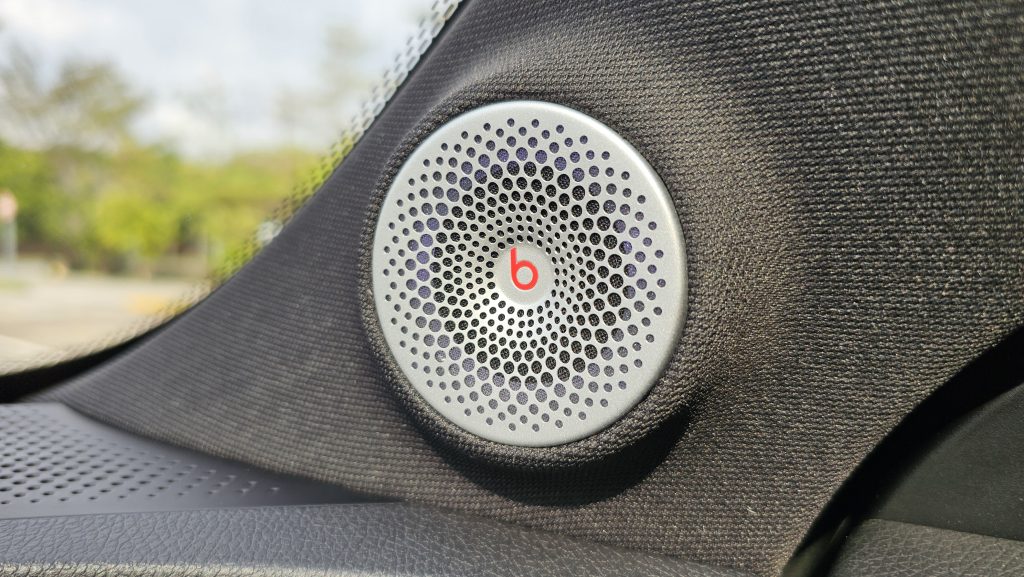
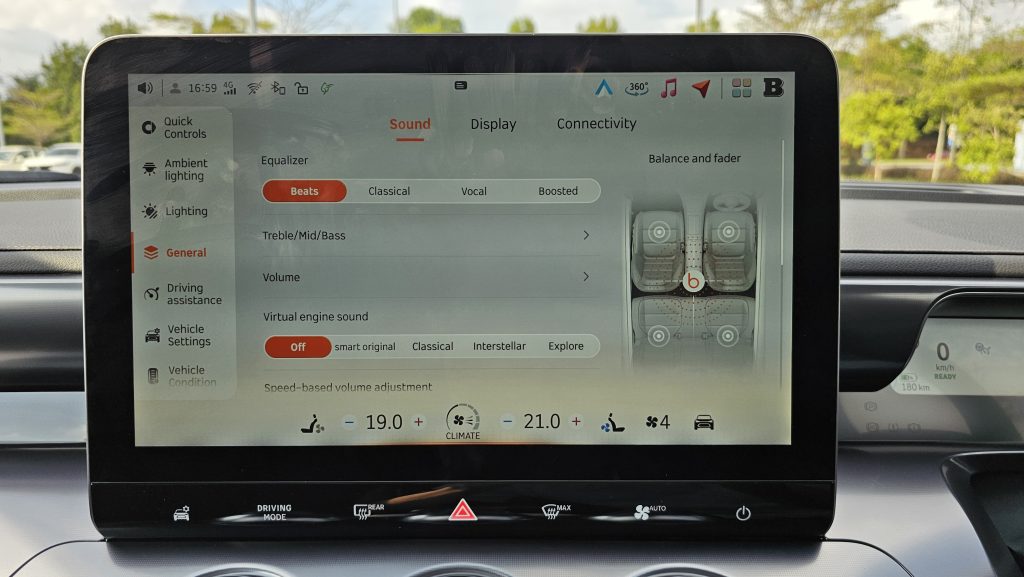
As per the previously tested Pro too, the interior of this BRABUS is generally a nice place to be. Everything within looks and feels premium, and it expectedly has all the kit that is expected from this type of premium automobile. Among the more notable premium bits of kit that this BRABUS nets over the base Pro includes the aforementioned Beats sound system, in addition to a 10-inch head-up display and interior ambient lighting.
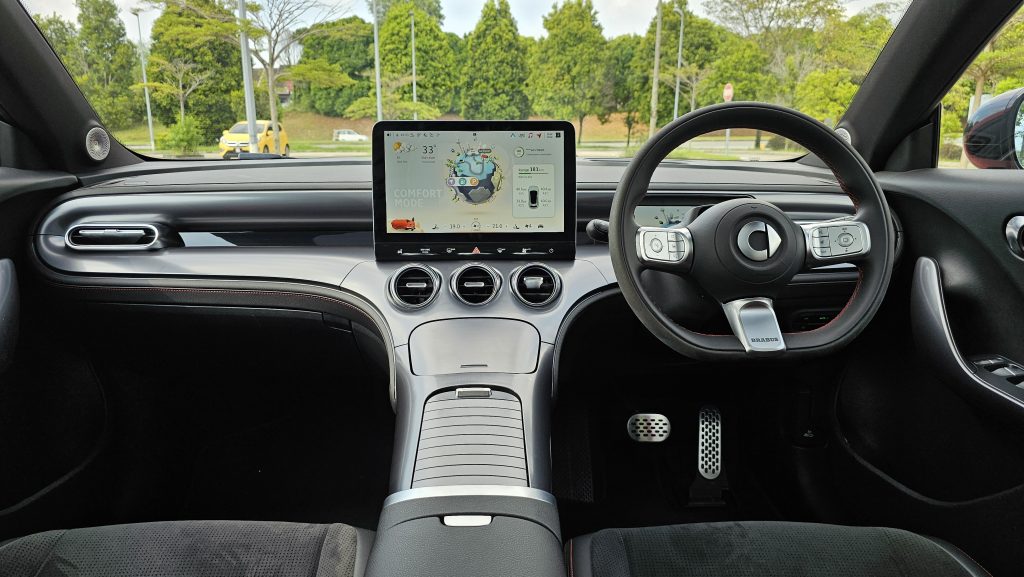
The BRABUS trim also incidentally gains a few sporty touches over the Pro as well, like suede on its steering wheel and sports seats, for instance, for that racier vibe within. Larger 20-inch wheels, a front hood scoop, and a more prominent rear spoiler on the outside, meanwhile, add that little bit of extra menace to what is a rather sleek and sexy looking car (with it really standing out in a crowd when painted in this vibrant shade of orange on this test car here).
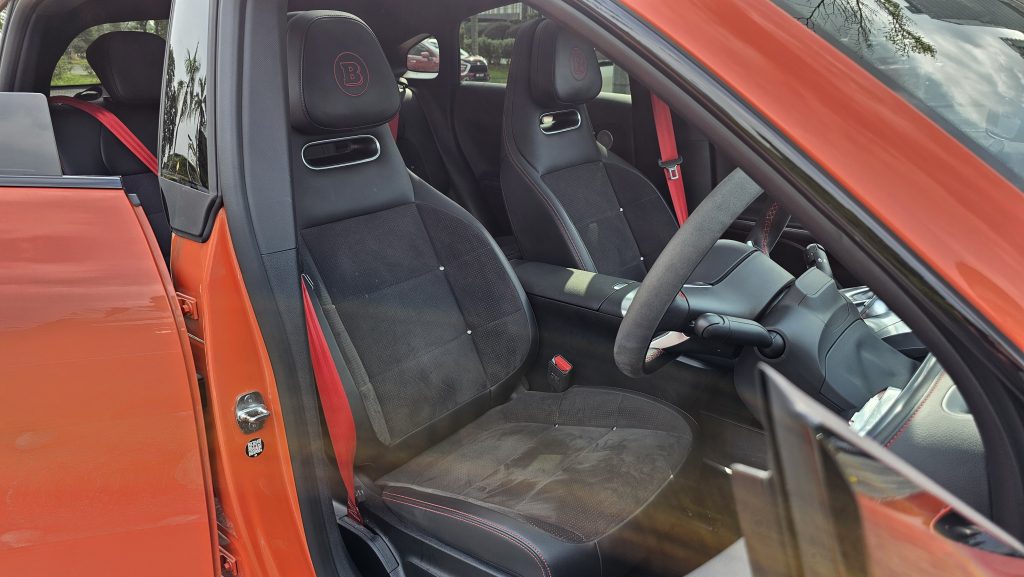
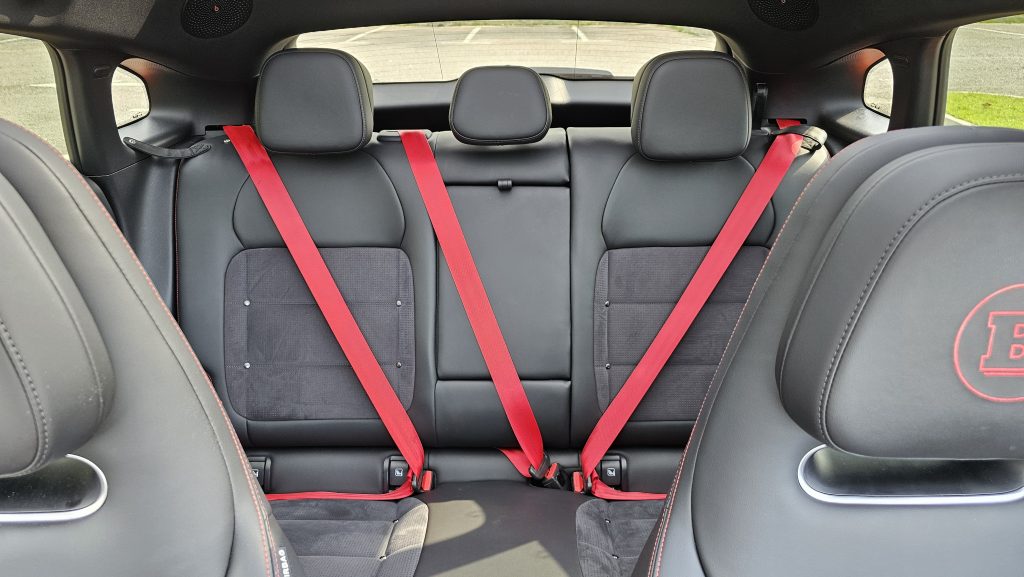
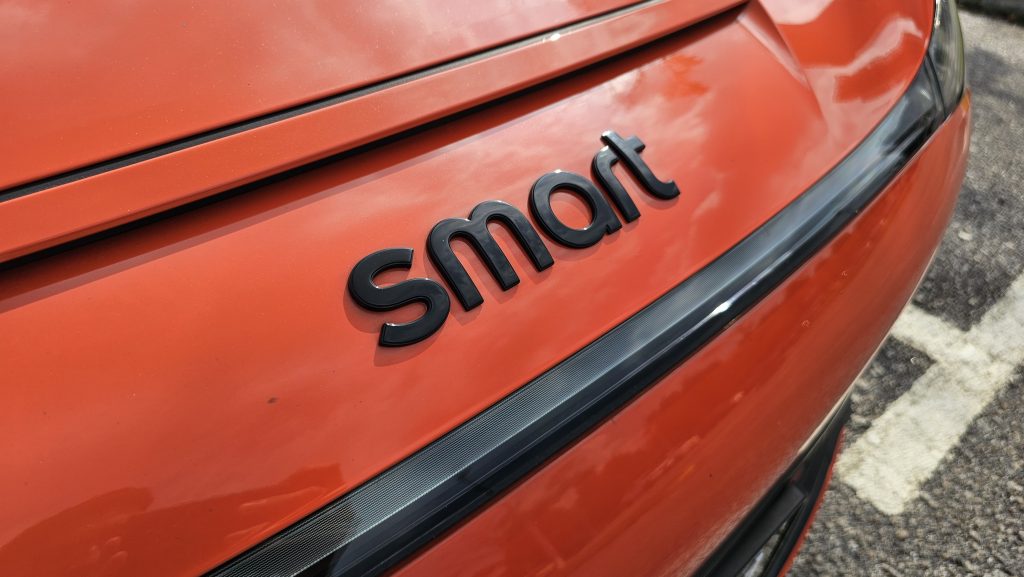
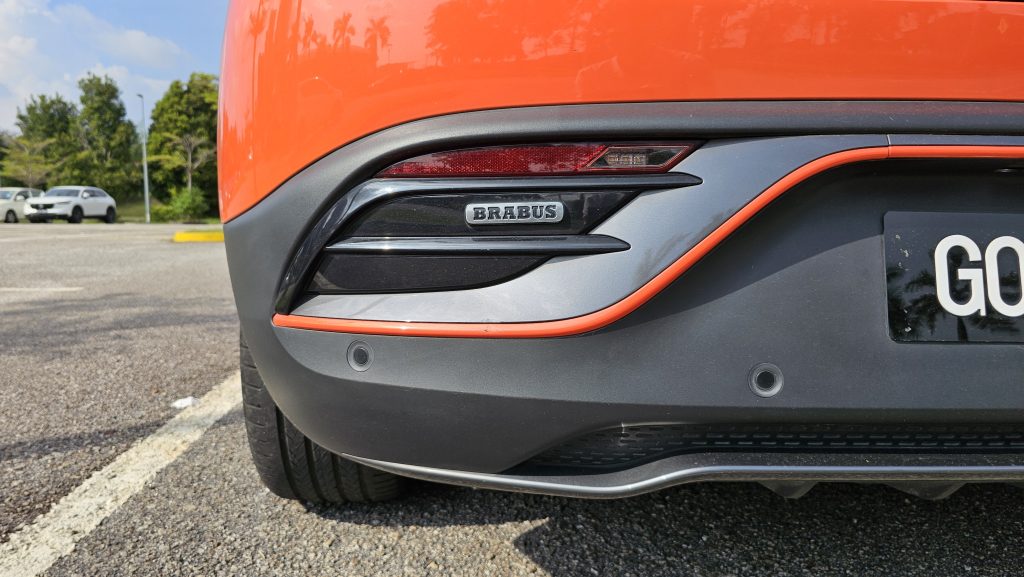
Rather annoyingly, though, what the BRABUS fails to add in its extended kit list is a retractable shade for the full-size panoramic glass roof on the #3. This therefore does mean that all occupants within this super-fast EV will still start to feel the tops of their heads sizzle in no time at all when the intense Malaysian sun is shining outside.
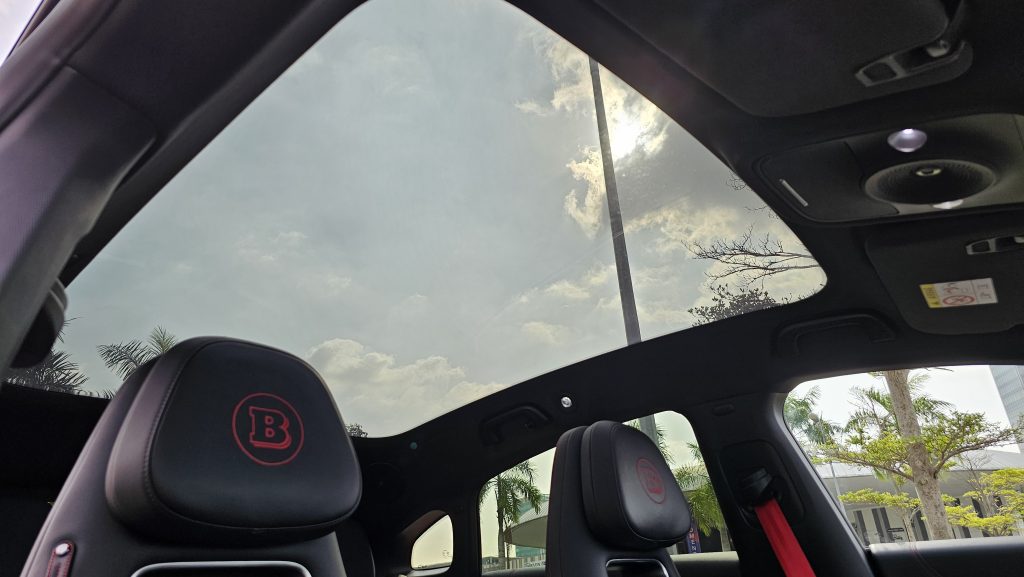
Much like the Pro, the #3 BRABUS’s ADAS system is still overly “smart” too, as it automatically reactivates all the more annoying nannies every instance when the car is put in Park. This thus necessitates a minute-long fiddling session (through a multitude of different sub-menus!) in the screen every time to turn most of the more intrusive ones off before setting off anywhere.
P/S: Someone from smart did mention after the fact that this multi-step process to turn everything off has since been rectified in an update (which this particular test car did not get yet), where all these irritants can be switched off with just a single tap of a button.
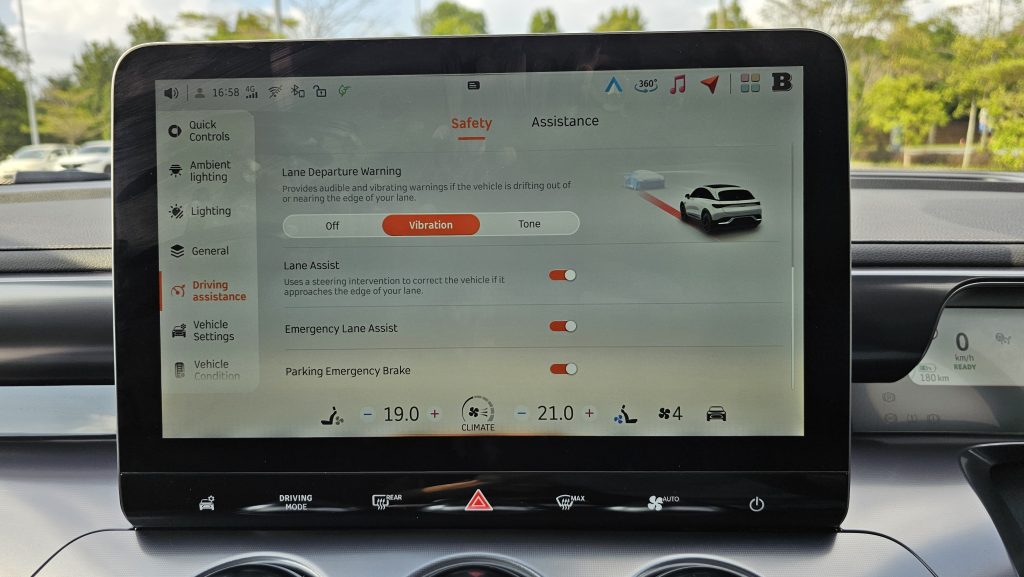
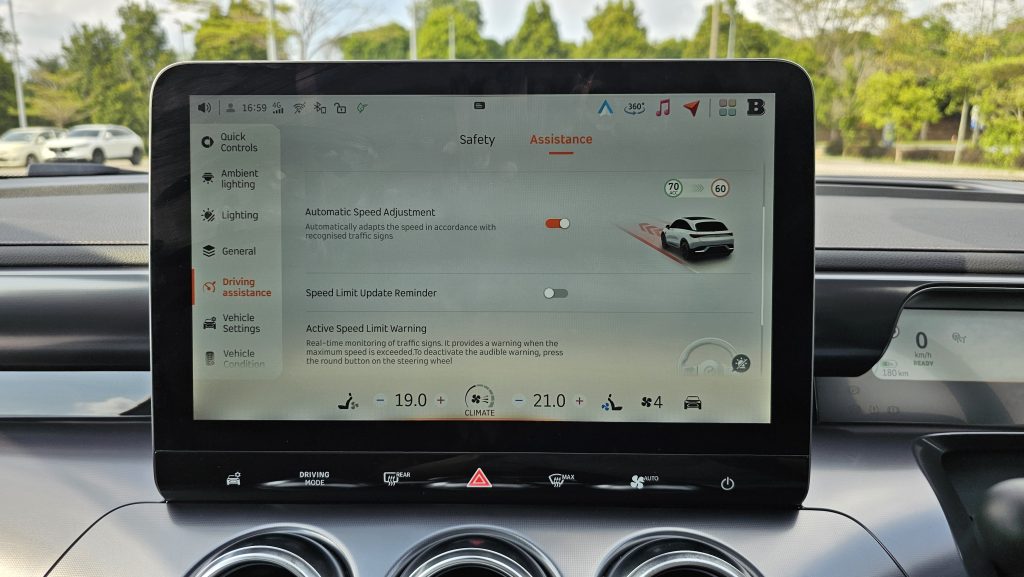
While it claims to have a WLTP-rated range of 455 km also, the smart #3 BRABUS could probably only realistically achieve about 300 km on a charge… but that’s mainly because its monstrous performance would make anyone just want to step on it at every opportunity. So perhaps think of it this way then: the time saved by getting to anywhere double-quick can be spent topping this EV up again for another round of mind-bending acceleration.
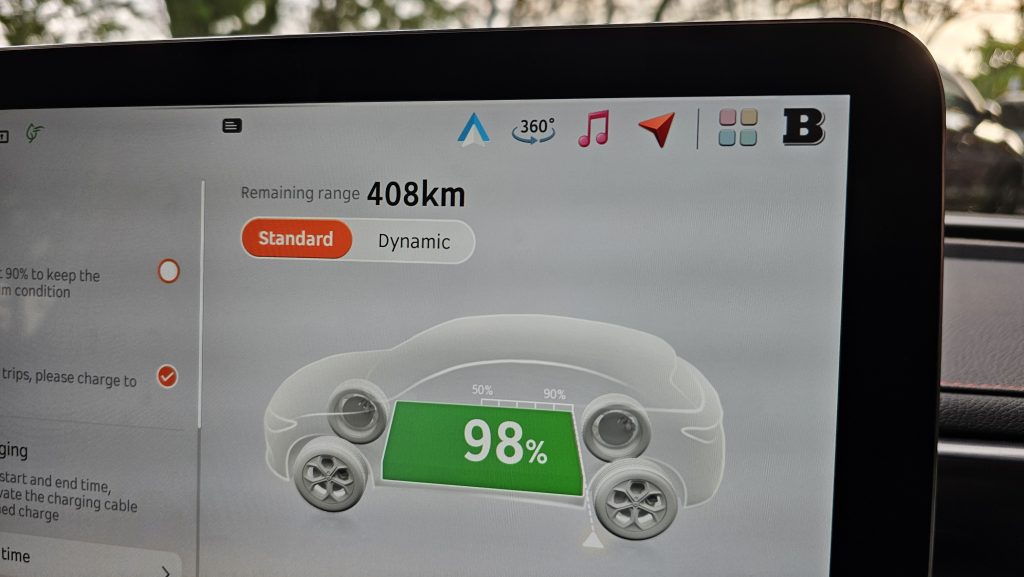
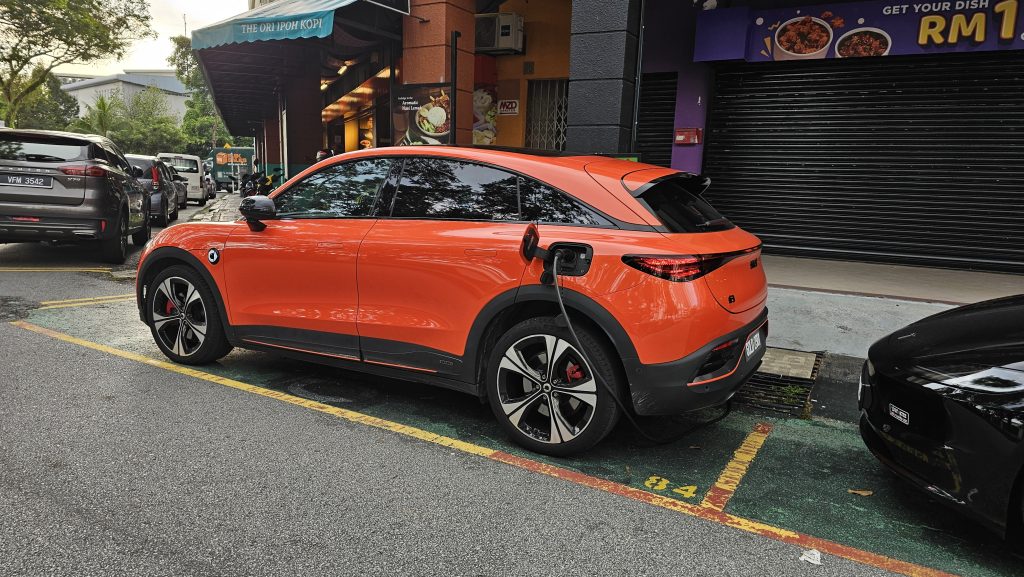
Being a bit more serious once again at the end here though, while power does certainly help create a USP for the #3, it doesn’t do enough to counter the many little annoyances when it comes to living with it. And frankly, there is already a better option available in the existing smart lineup, as the #1 BRABUS is capable of delivering much the same monstrous performance but also comes with a retractable sunshade, a more comfortable rear passenger experience, as well as a better (read: higher) driving position to more easily use its power in daily traffic.
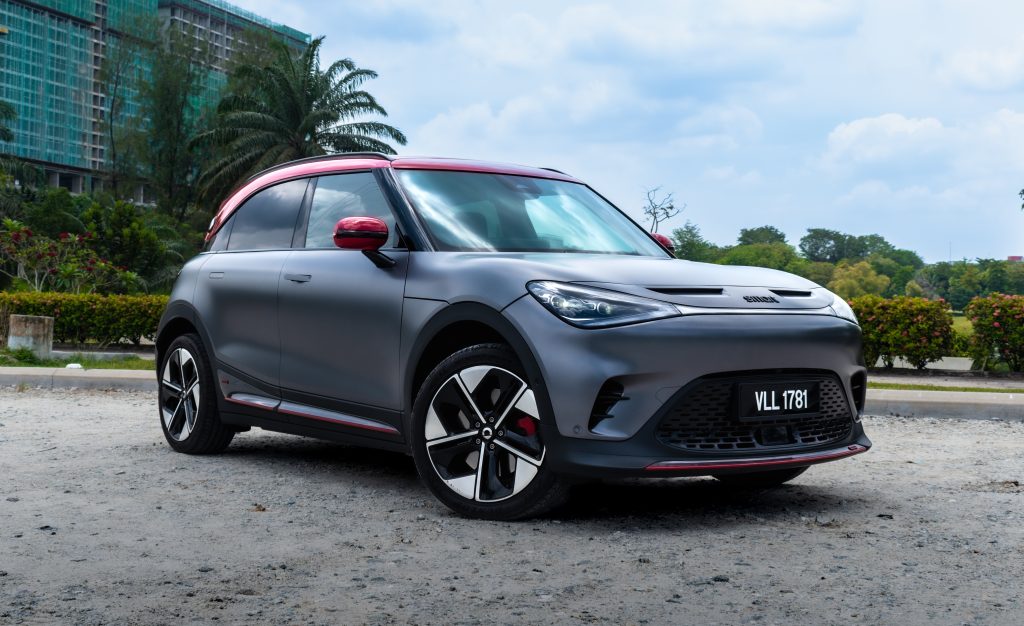
In this writer’s opinion, where the #3 actually shines best is as a twilight-hour highway bahnstormer. It after all has all the power in the world to blast away any tailgater, while also being a rather comfortable and cushy place to spend hours in the fast lane. And for the times when one doesn’t feel like driving, its fantastically smooth adaptive cruise control with auto steer is more than capable of taking the reins too. It is just a shame then that its lowly range pretty much kills any potential of it being a truly outstanding interstate stallion…
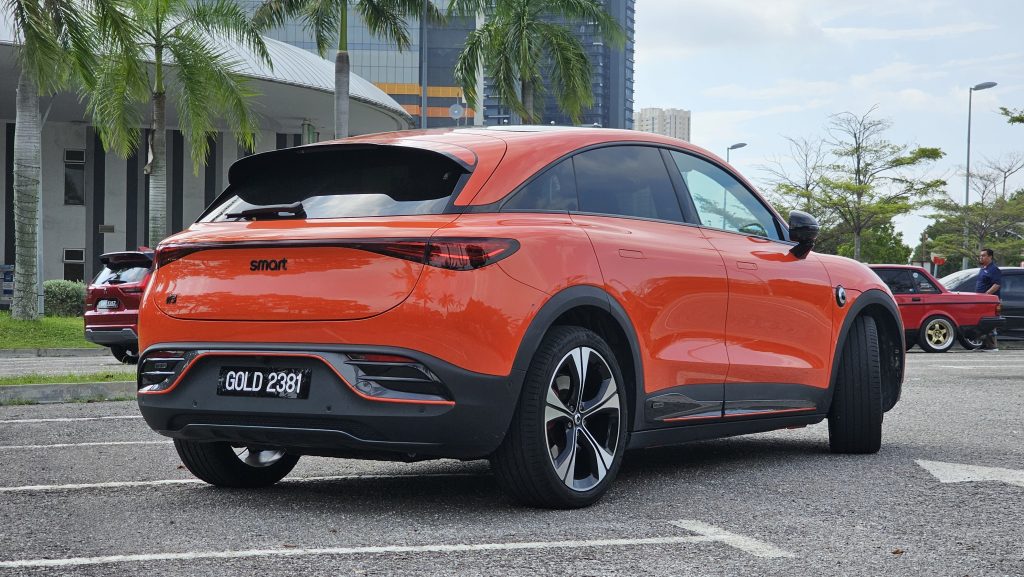
Odds & Ends
- There is an off switch turns all the lights off, including its DRLs.
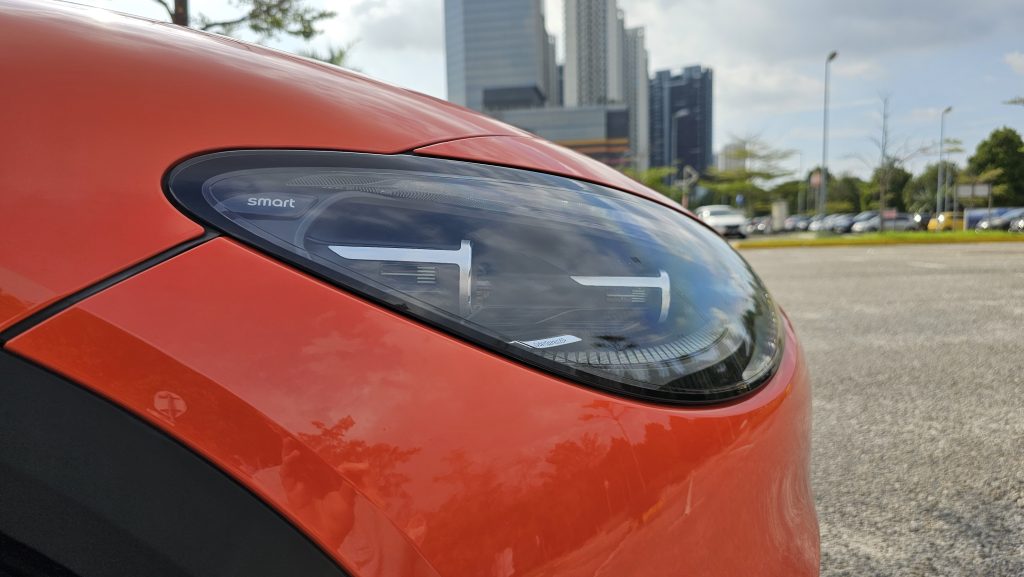
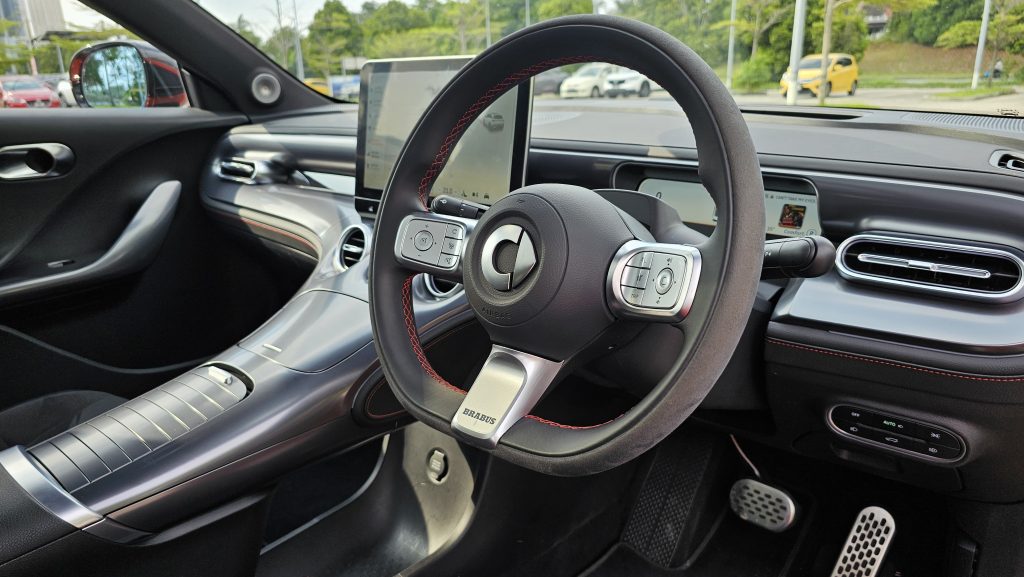
- Surprisingly enough for a coupe-crossover, the smart #3 has a rear wiper.

- The smart #3 emulates the Mercedes-Benz style of having the ambient light rings around its climate vents change colour when adjusting the temperature. The ring turns blue when the temperature is turned down, and red when it is turned up.
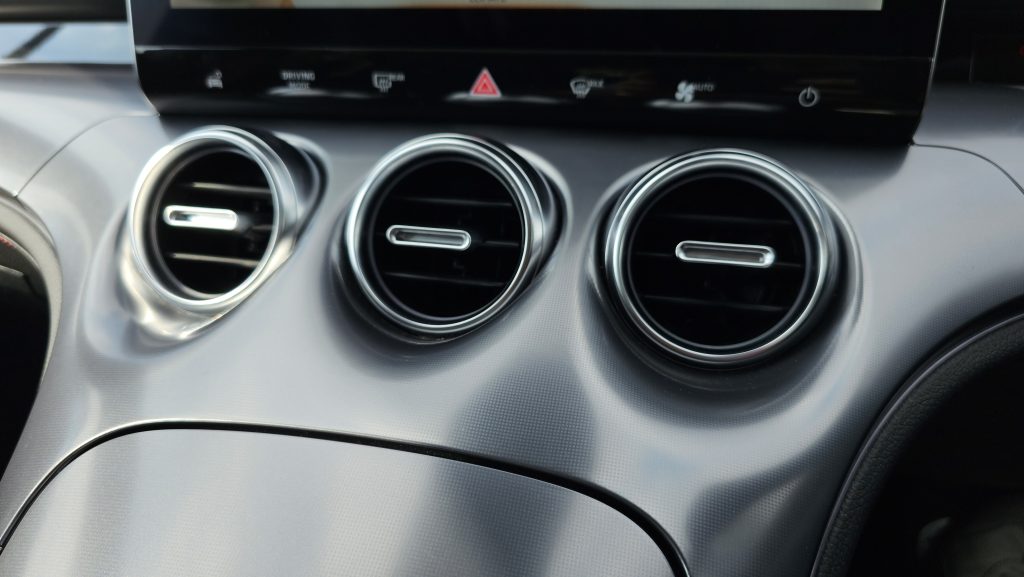
smart #3 BRABUS Technical Specifications
Motor: Twin permanent magnet synchronous motor (AWD)
Battery Capacity: 66 kWh
Range: 455 km (WLTP)
Max Power: 428 PS
Max Torque: 543 Nm
Top Speed: 180 km/h
0-100km/h: 3.7s
Charging Speed: 150 kW DC (10-80% in 30 mins), 22 kW AC (10-80% in 3 hours)
Price: RM 255,000

